Japan’s capital is a sprawling metropolis with an overwhelming number of things to do and places to stay. This guide breaks down the top neighborhoods and recommended hotels in the city to help you decide where to stay in Tokyo.
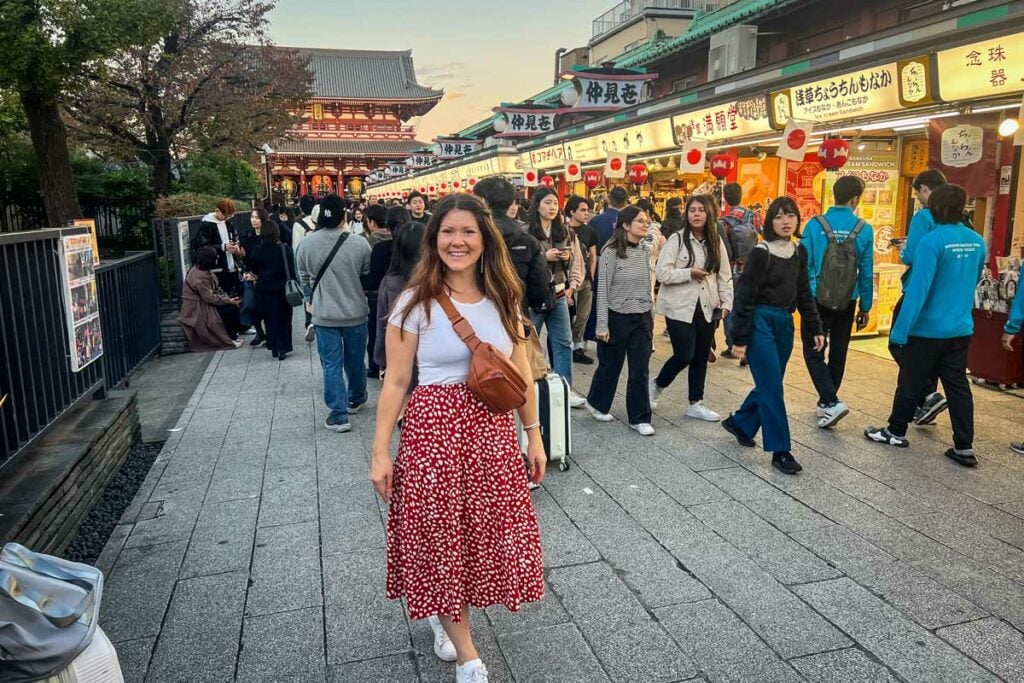
Tokyo is truly unlike any other city in the world.
First of all, the size of the city is almost unfathomable. Stand at a viewpoint atop Tokyo Skytree or Tokyo Tower and you will, quite literally, see the city stretch out in every direction for as far as the eye can see.
Tokyo is also a land of beautiful contradictions: futuristic skyscrapers next to historic temples and shrines; ancient traditions performed alongside dancing robots; relaxing onsens down the block from neon-lit nightclubs.
It’s breathtaking. It’s mind-boggling. And it’s what makes Tokyo such a special city that it has something to offer visitors of all ages, budget levels, and interests.
But it also makes planning a trip to Tokyo a *tad* overwhelming. Trust me, we’ve been there. One of the toughest things is deciding where to stay in Tokyo, and that’s why we put together this handy guide.
We’re breaking down the best neighborhoods to stay in Tokyo based on your specific travel style, needs, and interests. And we’re throwing in hotel recommendations for every budget, because why not??
Okay, let’s do this!
Where to stay in Tokyo for…
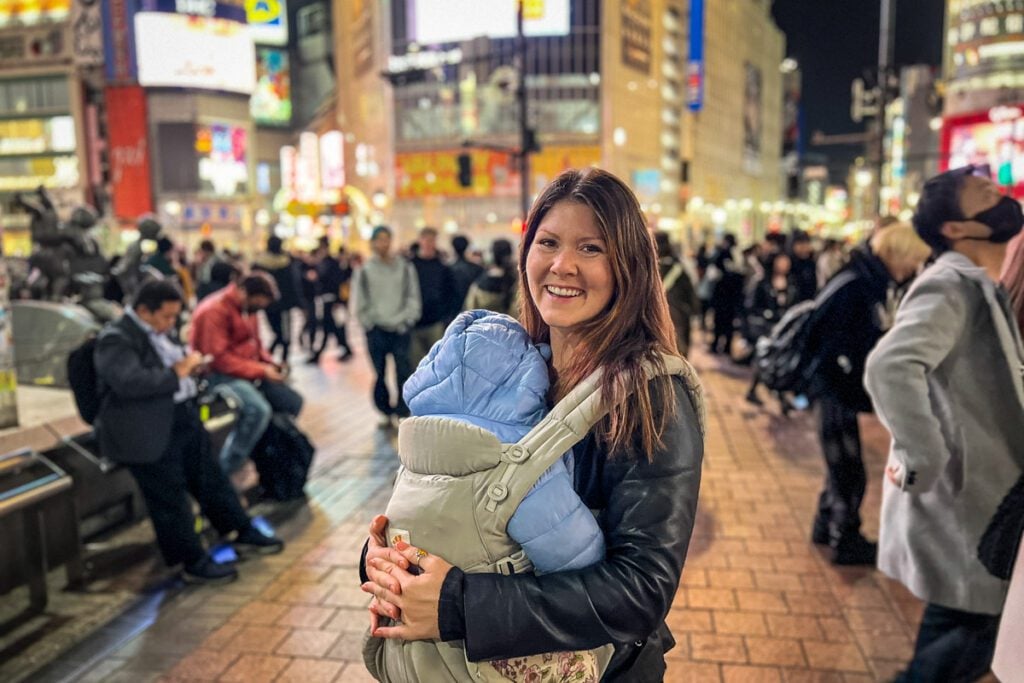
If you’re looking for quick answers, here are our suggestions on where to stay in Tokyo for different travel scenarios.
To get the lowdown on each neighborhood plus hotel recommendations, click on the ‘hood to jump to that section of the article, or just keep reading.
- For your first time: Shinjuku or Shibuya/Harajuku
- For luxury hotels & high-end shopping: Ginza
- For a quiet reprieve & local experience: Akasaka or Shimokitazawa
- For budget travelers: Akasaka
- For quick transit: Tokyo Station or Shinjuku
- For nightlife: Shinjuku or Roppongi
- For seeing all the sights: Shinjuku, Shibuya/Harajuku or Asakusa
- For families: Shibuya/Harajuku, Sumida or Odaiba
- For foodies: Shinjuku or Ginza
- For digital nomads/long-term stays: Shibuya, Sumida or Roppongi
Tokyo Neighborhoods Guide
Read this before your trip: First Timer’s Guide to Traveling to Tokyo
Overview of Tokyo’s neighborhoods
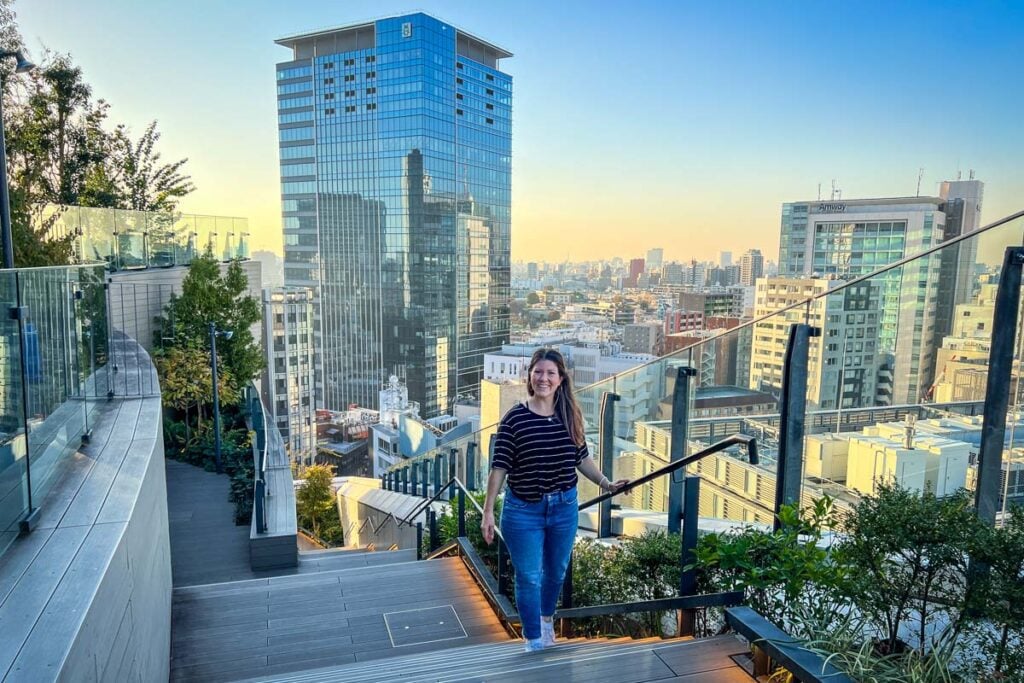
Click on the name of the neighborhood you’re interested in to jump to that section of the article, or just keep scrolling to see them all.
Shinjuku
Stay here for: buzzy vibes and lots of dining & entertainment options
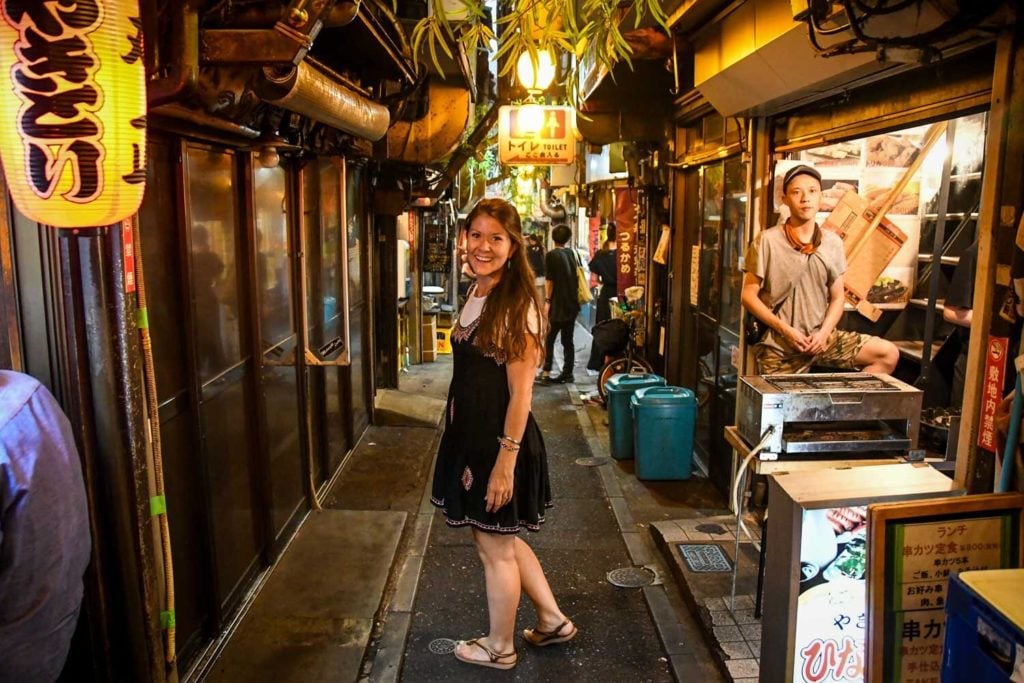
Shinjuku is one of the best neighborhoods to stay in Tokyo for your first visit. It’s close to a lot of major attractions, easy to get around, and the sheer volume of restaurants, shops, and entertainment options means you don’t have to go far to find something to do.
Crane your neck at the towering skyscraper district, home to some of Tokyo’s tallest buildings. Feel the city come alive in the neon-lit nightclubs and karaoke rooms of East Shinjuku and Kabuki-cho (aka the red light district).
Shinjuku Station is your gateway to exploring, connecting to every corner of Tokyo as well as day trip destinations like Mount Fuji. Seeing through more than 2 million passengers on a daily basis, this is the busiest railway station in the world.
Most central subway stop: Shinjuku Station
Top things to do in Shinjuku
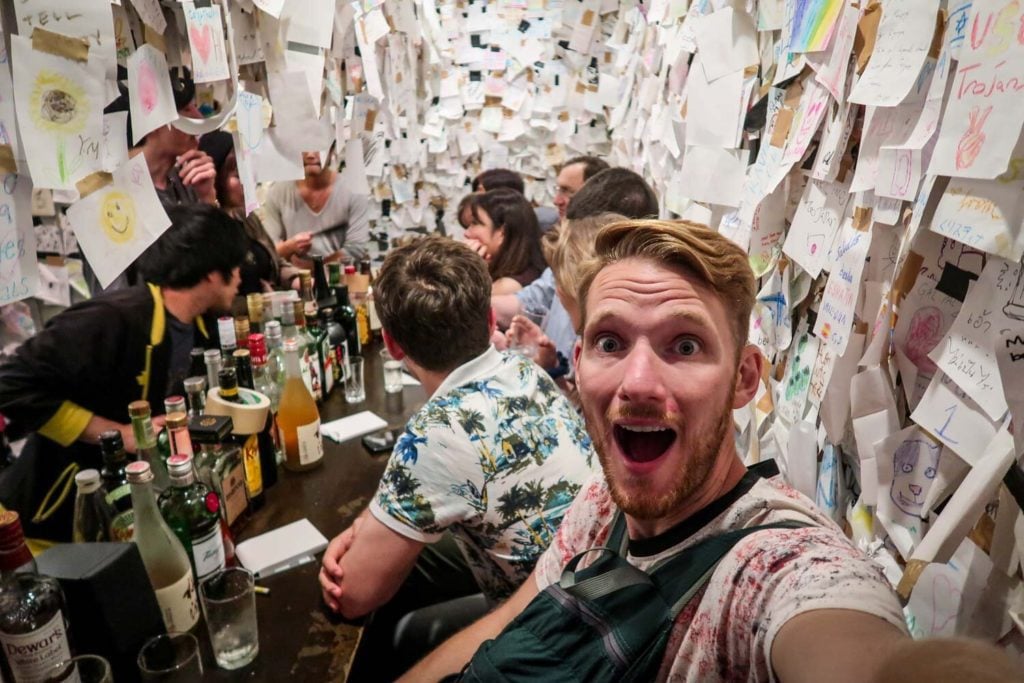
- Sample yakitori (meat skewers) and other street foods in the traditional eateries of Omoide Yokocho (aka Memory Lane / Piss Alley).
- Wander the narrow alleyways of Golden Gai and raise a glass at one of the tiny themed bars.
- Find serenity amidst Tokyo’s hectic streets at Shinjuku Gyoen National Garden.
- Get 360-degree views of the city from the top of the Tokyo Metropolitan Government Building. Unlike Tokyo Skytree and Tokyo Tower, this is a view you don’t have to pay for!
Recommended accommodation in Shinjuku
Budget: Yksi Sauna & Stay
Despite the name, this hotel doesn’t have a sauna. But it does have great reviews and offers private rooms at a reasonable price.
Mid-range: Rosenheim Tokyo Shinjuku Okubo
Though pretty basic, these apartment-style units have amazing reviews for service, comfort, cleanliness, and location.
Luxury: Bellustar Tokyo
Modern hotel with room service, fitness center, onsite restaurant, and incredible city views.
Shibuya/Harajuku
Stay here for: youthful energy and trendy fashion
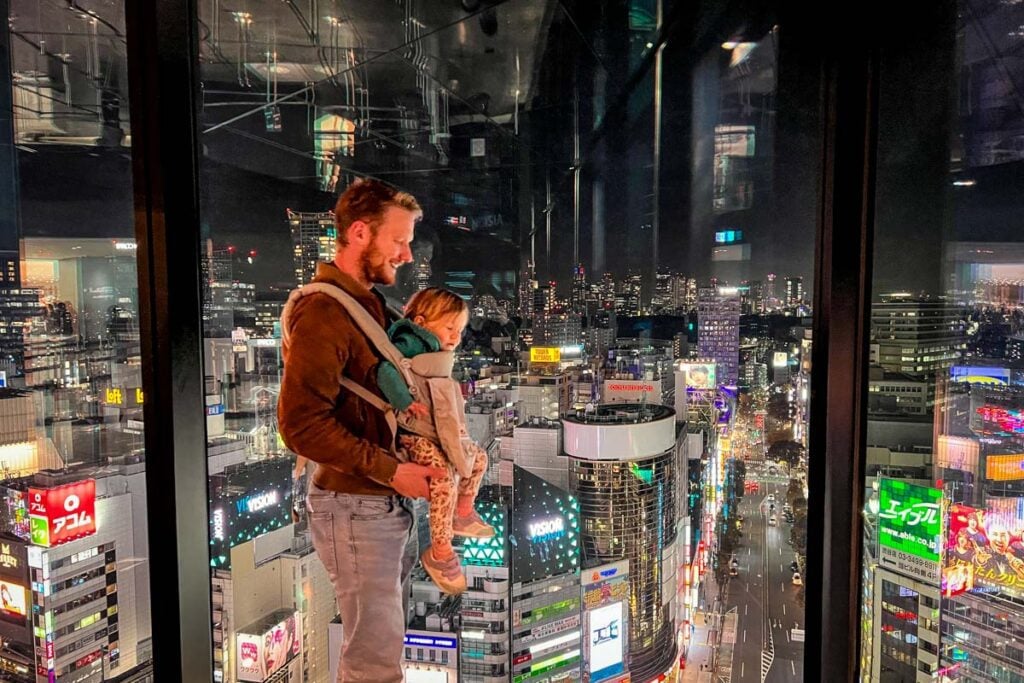
These adjacent neighborhoods border Shinjuku to the southwest and form another popular area of Tokyo for first-timers.
Shibuya is a dynamic hive of business, retail, and entertainment. Its frenzied urban energy is embodied in the world-famous Shibuya Crossing, a 7-way intersection where all the lights turn red at once and pedestrians scramble every which way.
Though Harajuku is technically part of Shibuya, it’s so unique that it deserves its own introduction.
This lively neighborhood in Tokyo is the beating heart of Japan’s youth culture and the essence of kawaii – aka all things cute. Think rainbow-colored foods, themed cafes, and sweets on sweets, from crepes and bubble tea to animal-shaped donuts and cotton candy.
Takeshita Street is known for its trendy fashion and offbeat vintage shops, while Cat Street connects Harajuku and Shibuya with tons of quirky boutiques (but no cats?).
Most central subway stop: Shibuya Station
Top things to do in Shibuya/Harajuku
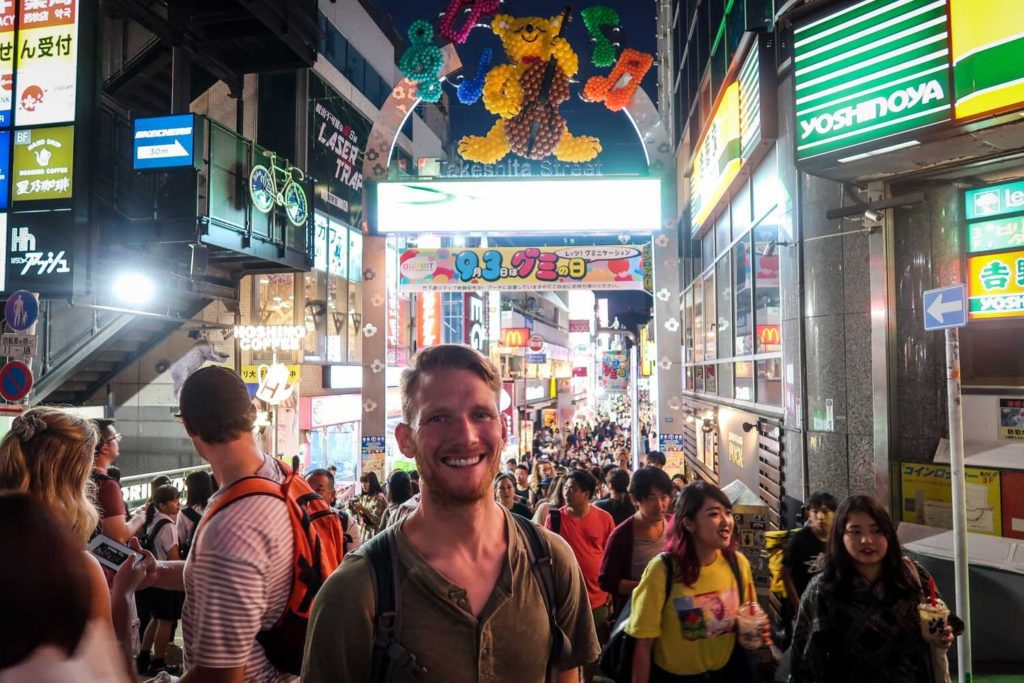
- Witness the organized chaos of the iconic Shibuya Scramble Crossing.
- Take a breath at Meiji Shrine, an understatedly beautiful Shinto shrine set amongst wooded pathways and tranquil gardens.
- Discover Japan’s kawaii culture in Harajuku.
Recommended accommodation in Shibuya/Harajuku
Budget: Book Tea Bed
Affordable capsule hotel in a prime location that has both women-only and mixed floors, as well as an onsite cafe.
Mid-range: Oku-Shibu Residence
This centrally-located apartment complex has one-bedroom and two-bedroom units with varying amenities, such as air conditioning or a full kitchen.
Luxury: Trunk (Hotel) Yoyogi Park
This hotel receives rave reviews for its location and amenities, including an outdoor pool, a hot tub, and bikes available for guests to use for free.
Psst! Check out our ultimate 5 day Tokyo itinerary, which includes all the top sights plus some hidden gems you’ve probably never heard of!
Ginza
Stay here for: luxury, pampering, designer goods, and fine dining
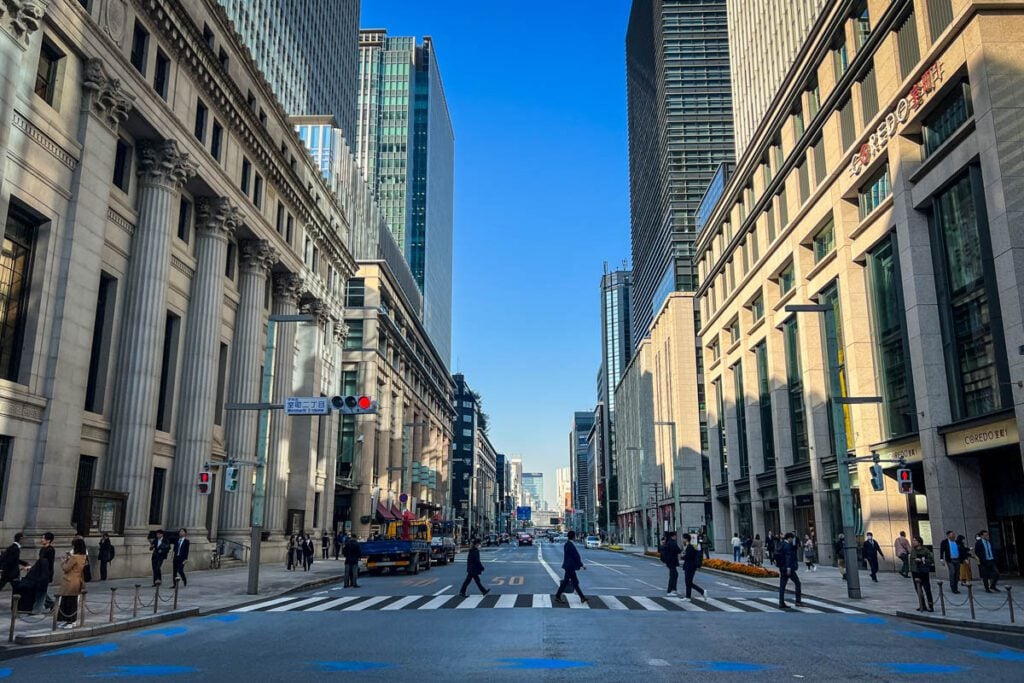
If Tokyo was NYC, Ginza would be the Upper East Side: a bougie neighborhood of posh boutiques, luxury brands, designer flagship stores, glamorous cocktail bars, and high-end restaurants.
In addition to shopping and dining, Ginza offers more opportunities to indulge in a lavish lifestyle at its art galleries and exclusive theaters.
Unless you’re super rich, Ginza is probably not the best area to stay in Tokyo, but it’s worth a visit for window-shopping, admiring the ultra-modern architecture, and picking your jaw up off the ground. A spectacle to be sure, but not one that most of us can afford.
Most central subway stop: Ginza Station
Top things to do in Ginza
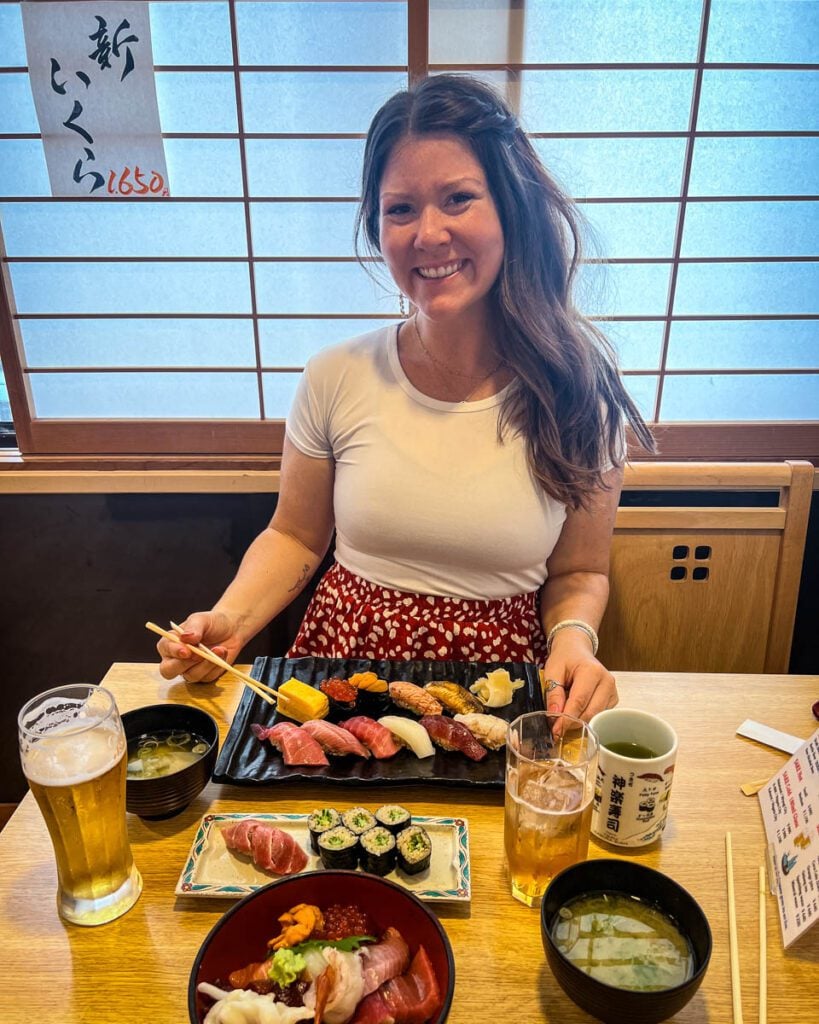
- Shop ‘til you drop at Ginza’s many high-end boutiques and department stores.
- Experience traditional Japanese kabuki at Kabukiza Theater, where you can watch a full-length play or buy a single act ticket.
- Sample fresh seafood and other traditional Japanese foods at Tsukiji Outer Market.
Recommended accommodation in Ginza
Budget: Sotetsu Fresa Inn Ginza Sanchome
Clean and comfortable rooms with multilingual 24-hour front desk staff, just steps away from Asahi Inari Shrine.
Mid-range: Dormy Inn Premium
This highly-rated hotel in the heart of Ginza boasts its own onsen and sauna.
Luxury: Hotel the Celestine
Impeccable service, large rooms with great views, onsite massage spa, restaurant, and bar.
Super luxury: The Peninsula Tokyo
With a full-service spa, gym, multiple restaurants, lavish rooms, indoor pool overlooking the Imperial Palace Gardens, and a fleet of Rolls Royces on call, this hotel is next-level luxury.
Tokyo Station
Stay here for: iconic sights and day trips from Tokyo to other parts of Japan
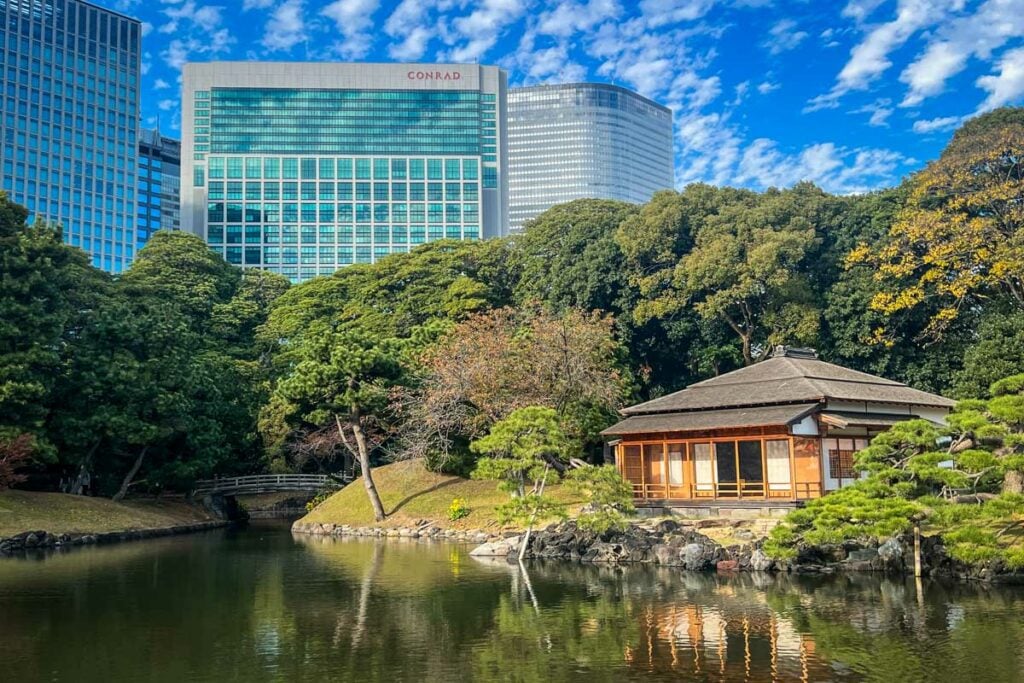
As the city’s main transportation hub, Tokyo Station is connected to local metro, JR, and Shinkansen (bullet train) lines. If you’re basing yourself in Japan’s capital with the goal of taking some day trips outside of Tokyo to explore more of the country, staying near the station will cut down on the amount of transportation you need to take.
But the area around Tokyo Station itself is also worth exploring.
In the surrounding neighborhood, modern infrastructure is juxtaposed with important historic and cultural landmarks. The most prominent is the Imperial Palace, home to none other than the Emperor of Japan himself.
Most central subway stop: Tokyo Station
Top things to do in Tokyo Station
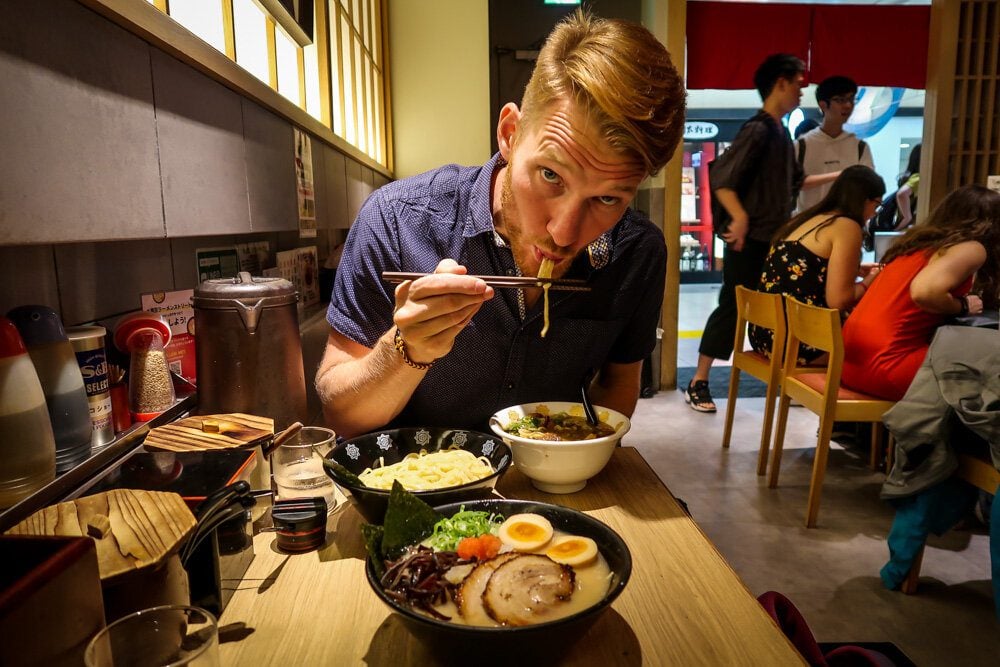
- Explore the Imperial Palace grounds with its manicured gardens and historic sites, including the famous Nijubashi Bridge.
- Participate in an informal tea ceremony at Hamarikyu Gardens. Or, if you have more time, learn about traditional Japanese tea ceremonies (which can take hours!).
- Slurp some noodles on Ramen Street, a series of underground restaurants all serving different ramen styles.
Recommended accommodation in Tokyo Station
Budget: Tosei Hotel Cocone Kanda
Great location with decently priced rooms in the heart of one of the best foodie areas of Tokyo.
Mid-range: Hotel Intergate Tokyo Kyobashi
Steps away from Tokyo Station, this very clean hotel has great reviews and excellent service.
Luxury: The Tokyo Station Hotel
Elegant European-style rooms with an onsite spa and buffet breakfast in an unbeatable location adjacent to Tokyo Station.
Are you on the fence about purchasing our Classic 2-Week Japan Itinerary and curious what you’ll get? We’re offering you the chance to get a sneak peak of our PAID itinerary by downloading Day 1 in Tokyo, totally FREE!
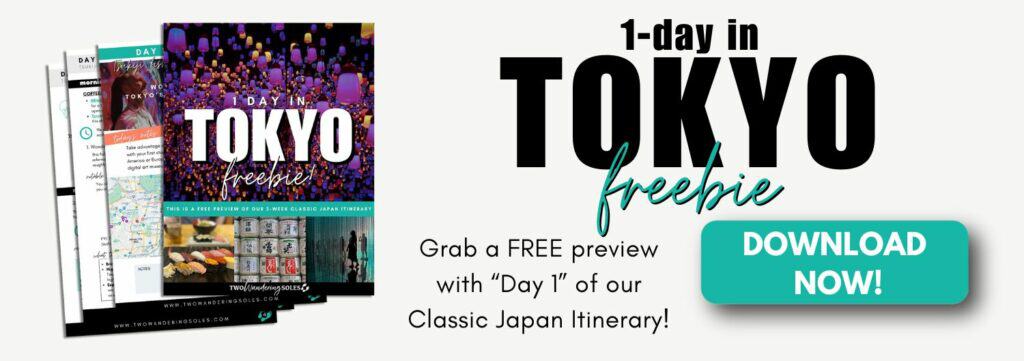
Akihabara
Stay here for: anime, Japanese pop culture, computers & electronics
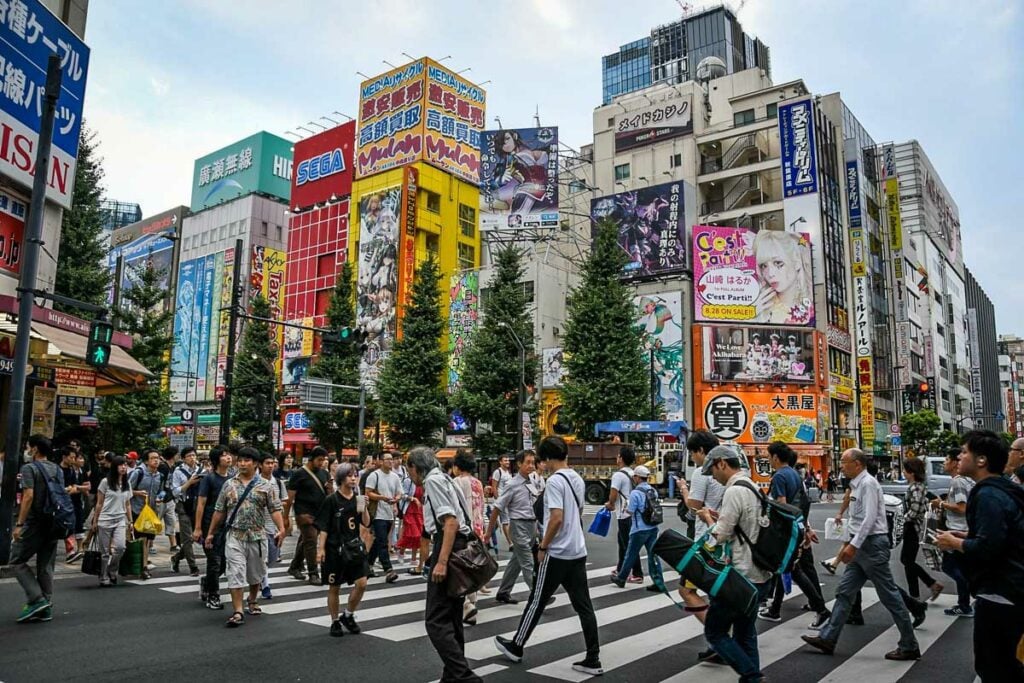
Nicknamed “Electric Town”, Akihabara is the best area to stay in Tokyo for tech junkies, gamers, and diehard anime fans.
The streets are a riot for the senses with colorful buildings, digital ads, themed cafes, and the sounds of arcades, pachinko parlors, and vending machines.
Electronics stores sell the latest high-tech gear and futuristic gadgets, while other shops offer trading cards, figurines, and just about every anime and manga collectible you can think of.
Good to know: Anime & manga fans sometimes refer to themselves by the Japanese word “otaku”. In western countries, this just means a person belonging to those fandoms; but in Japanese it defines a person with “obsessive interests”, which some might perceive as negative.
Most central subway stop: Akihabara Station
Top things to do in Akihabara
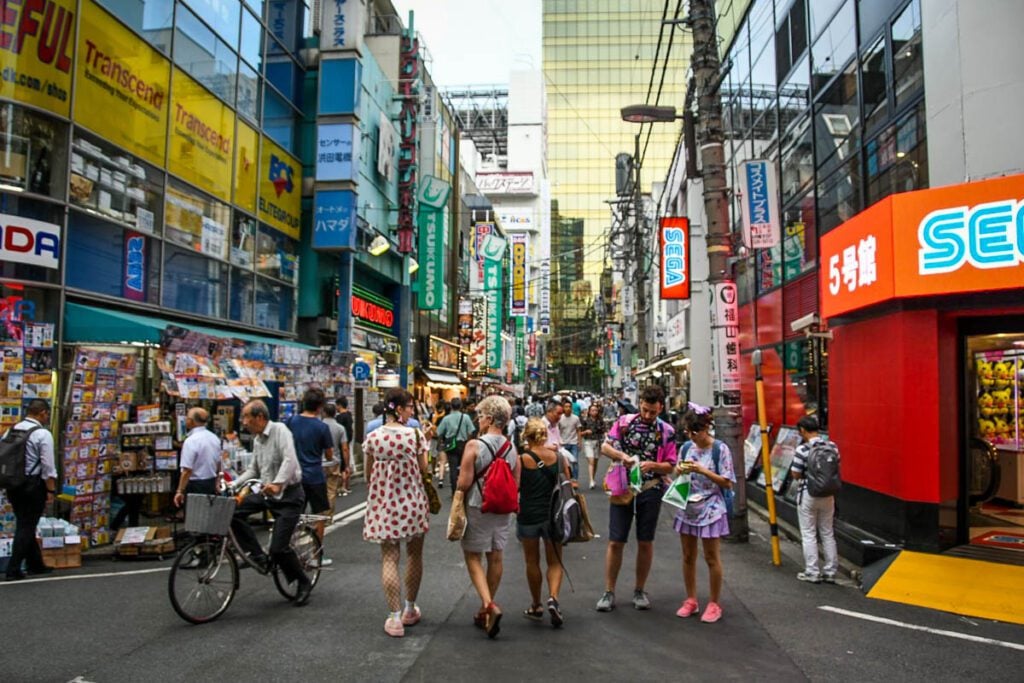
- Immerse yourself in Japan’s anime and manga culture by browsing the shops or catching an event at the Tokyo Anime Center. Don’t miss Akihabara Radio Kaikan, which houses various shops and a museum in a historic building.
- Pick up the latest high-tech gadgets, cameras, and computer gear at Akihabara’s many electronics stores.
- Geek out at Super Potato, a famous gaming shop with retro video games and vintage consoles.
Recommended accommodation in Akihabara
Budget: APA Hotel Akihabara Ekikita
Basic, modern hotel with friendly, attentive staff and comfy rooms.
Mid-range: The Tourist Hotel & Cafe
Spacious accommodations with lots of options, including family rooms that sleep up to 5 adults.
Luxury: Nohga Hotel
This highly-rated hotel has an onsite restaurant with woodfired pizzas and—this might sound strange, but—guests LOVE their showers.
Ueno
Stay here for: history, culture
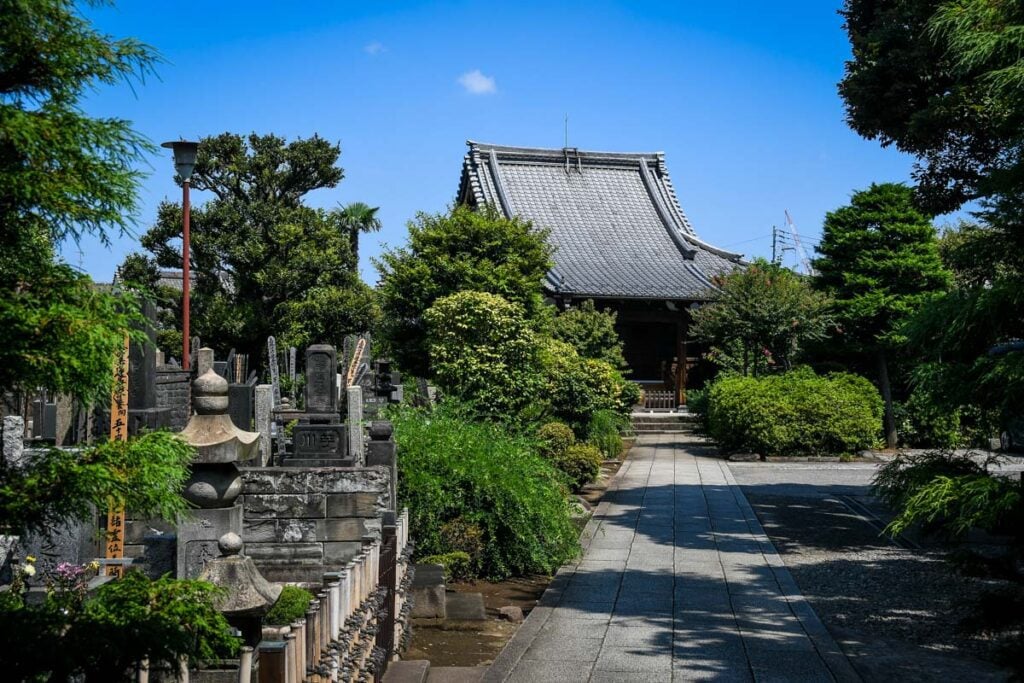
The neighborhood of Ueno is best known for its lively markets and its sprawling park, considered one of the best places in Tokyo to see sakura (cherry blossoms) in the spring.
You could easily spend an entire day exploring Ueno Park. Not only does the park offer green space, it also contains a large pond, multiple shrines, and 4 museums: the Ueno Royal Museum, the National Museum of Nature and Science, the Tokyo Metropolitan Art Museum, and the Tokyo National Museum. The park is adjacent to Ueno Station, making it easy to visit even if you’re staying in a different neighborhood.
Most central subway stop: Ueno Station
Top things to do in Ueno
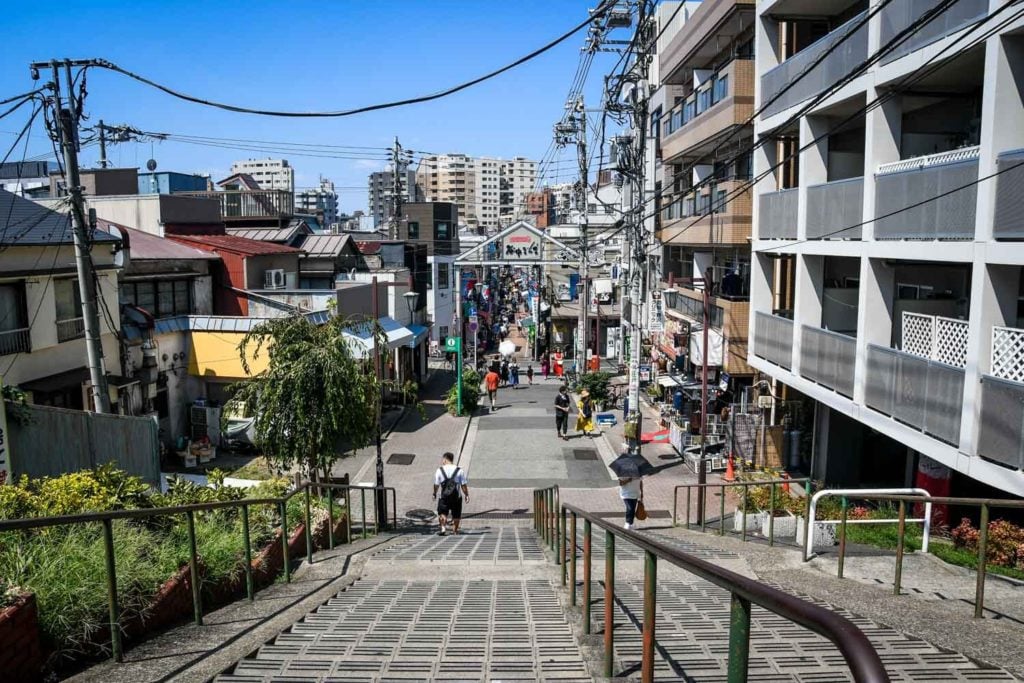
- Wander Ueno Park and visit its museums.
- Shop the lively market street of Ameyoko.
- Step back in time in the nearby historic Yanaka district, known as “Tokyo’s most traditional neighborhood” due to its well-preserved Edo-period atmosphere and architecture.
Recommended accommodation in Ueno
Budget: Hiromas Hostel
Good-value capsule hotel with air-conditioned rooms. Note: gender-separate accommodation.
Mid-range: Hotel Resol
Conveniently located across from Ueno Station and Ueno Park, this hotel has comfortable rooms and optional breakfast.
Luxury: Mimaru Tokyo Ueno East
This chain has several properties in the Ueno area alone, and they all have great reviews. We think this location is most convenient, just a 3-minute walk to Ueno Station and 9-minute walk to Ueno Park.
Asakusa
Stay here for: history, tradition

Compared to the modern or even futuristic vibes of some other Tokyo neighborhoods, Asakusa manages to retain the traditional atmosphere of “old Tokyo”.
Gigantic malls and department stores are replaced with small shops and hole-in-the-wall eateries. Budget travelers wondering where to stay in Tokyo might consider Asakusa, as the area is pretty walkable and there are plenty of affordable hotels and ryokans.
Most central subway stop: Asakusa Station
Top things to do in Asakusa
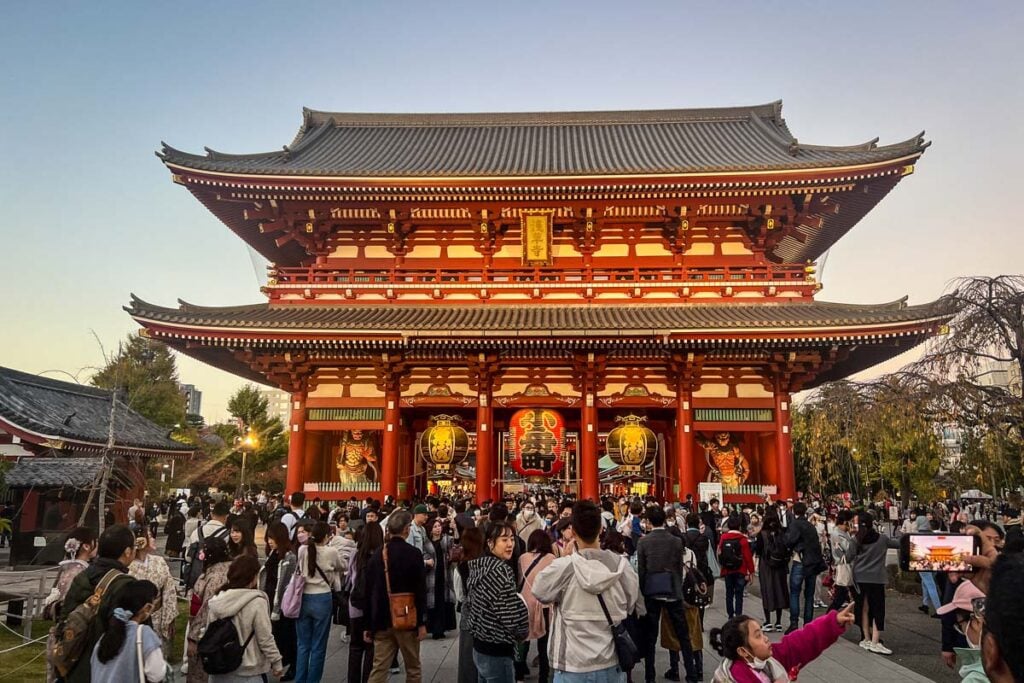
- Explore the grounds of Senso-ji, Tokyo’s oldest Buddhist temple, with its 5-story pagoda and Kaminarimon (“Thunder Gate”).
- Shop for Japanese souvenirs at Nakamise-dori or Kappabashi (“Kitchen Town”).
- Get your nostalgia on with retro rides and carnival games at Asakusa Hanayashiki, Japan’s oldest amusement park.
- Immerse yourself in local culture at Asakusa Engei Hall, a traditional Japanese arts theater featuring performances of rakugo (comic storytelling).
- Note: if you don’t understand Japanese, the jokes may not land, but the vibes are immaculate and they also host other talent, like concerts and magic shows.
Recommended accommodation in Asakusa
Budget: Far East Village Hotel
Modern hotel with quiet rooms close to all amenities. Rooms with city views are available.
Mid-range: Asakusa Tobu Hotel
This top-rated hotel is conveniently located close to Asakusa Station and tons of restaurants. In addition to spacious modern rooms, they also have a couple of themed novelty rooms.
Luxury: Cyashitsu Ryokan
A traditional Japanese ryokan with modern touches and a private onsen with a view.
→ Related: Find out our genius system for finding the best accommodation every time.
Sumida
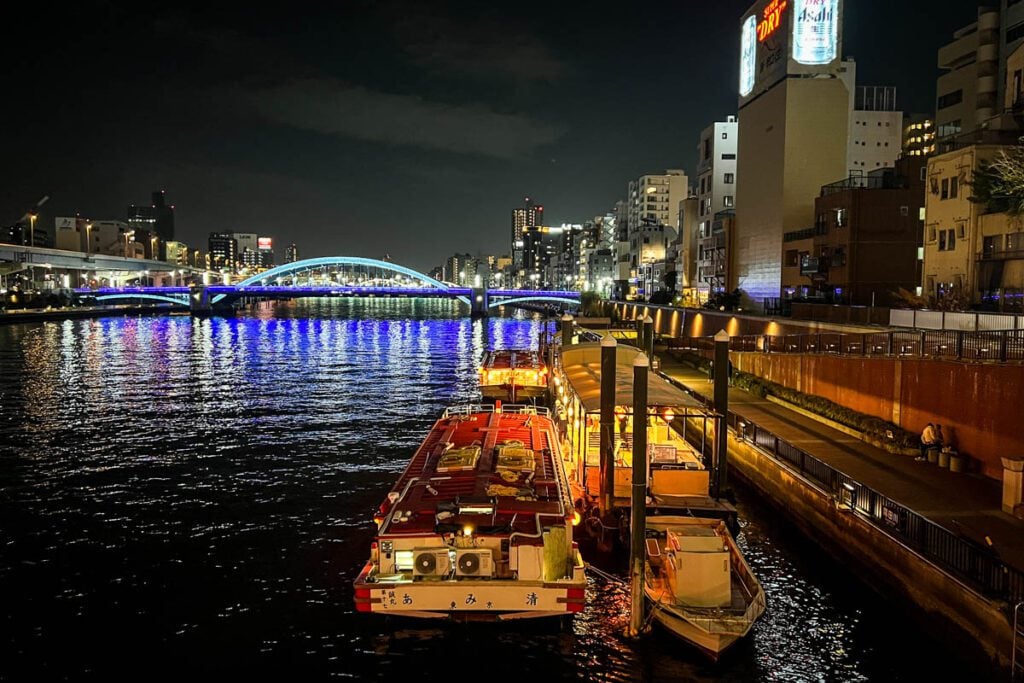
Stay here for: sightseeing, scenic riverfront
Sumida blends modernity and tradition in a delightful display of contrasts.
On one hand, you have Tokyo’s sumo district, where the atmosphere at a tournament in the national arena could make you swear you’ve stepped back in time.
On the other hand, you have the iconic Tokyo Skytree, the 634-meter (2,080-foot) broadcast tower that defines the Tokyo skyline.
You have upscale shopping malls and traditional bathhouses. Modern apartments and narrow streets lined with wooden houses.
Sumida’s mix of cultural landmarks, scenic riverfront, and contemporary attractions make it a multifaceted district that captures Tokyo’s dynamic spirit and diverse offerings.
Most central subway stop: Tokyo Skytree Station
Top things to do in Sumida
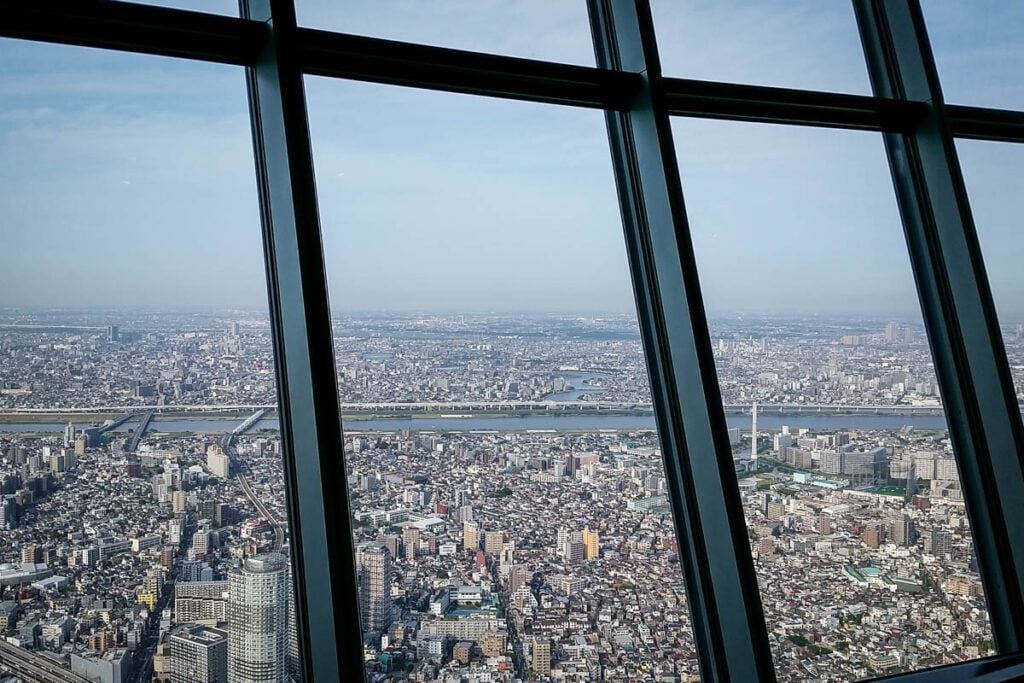
- Get a bird’s-eye view of the city (and maybe Mount Fuji, if you’re lucky) from Tokyo Skytree.
- Watch sumo at Ryogoku Kokugikan National Sumo Arena. Tournaments are hosted here in January, May, and September. If you can’t get tickets or it doesn’t align with your trip, it’s still worth visiting the stadium and sumo museum.
- Take in the sights on a Sumida River cruise, including the iconic Tokyo Gate Bridge.
- Soak in centuries of history at the Edo-Tokyo Museum.
Recommended accommodation in Sumida
Budget: 東京日和
In addition to double rooms, this hotel offers family rooms with Japanese-style futons that sleep up to 6 people.
Mid-range: Petit Grande Miyabi
These apartment-style units are all equipped with a kitchen, microwave, seating area, flat-screen TV, washing machine, and private bathroom.
Luxury: The Gate Hotel Ryogoku by Hulic
Guests love the breakfast at this well-appointed hotel in the sumo district that boasts a restaurant, bar, and open terrace with beautiful views of the Sumida River.
Roppongi
Stay here for: art, entertainment, nightlife, party scene
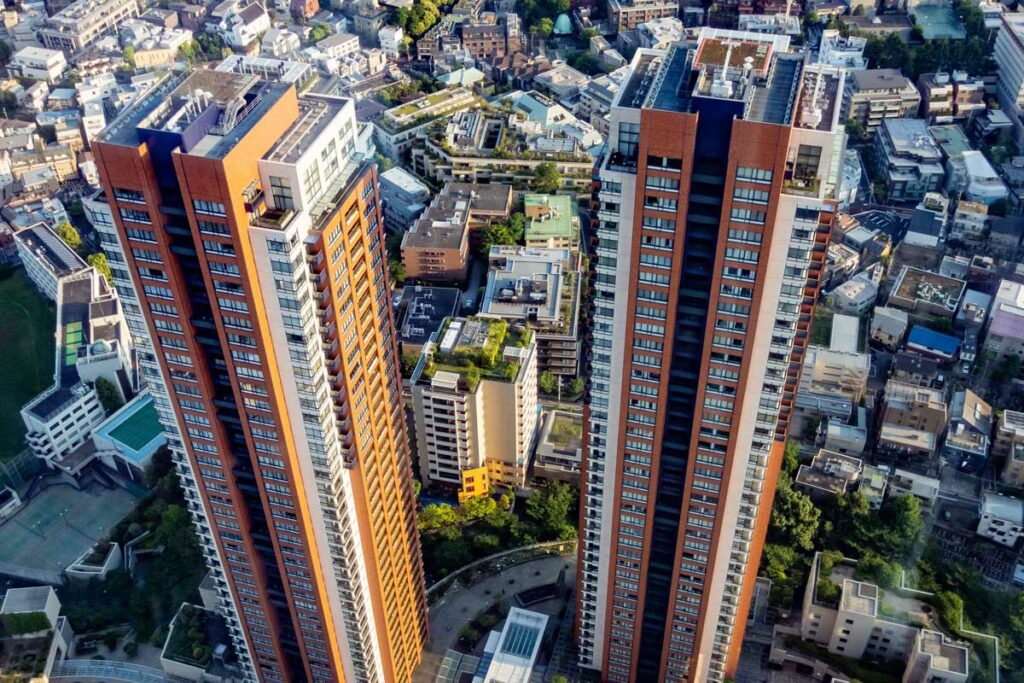
Situated in central Tokyo, Roppongi is primarily an entertainment district, known for its wild nightlife. There are countless bars and nightclubs that will have you partying until the sun comes up, if that’s your thing. Due to a large expat community, the bars and restaurants here are especially popular with foreigners.
Flanking the neighborhood are two gigantic multi-use complexes: Roppongi Hills and Tokyo Midtown. Both house a mix of residential and commercial facilities, including restaurants, museums, and shops.
Most central subway stop: Roppongi Station
Top things to do in Roppongi
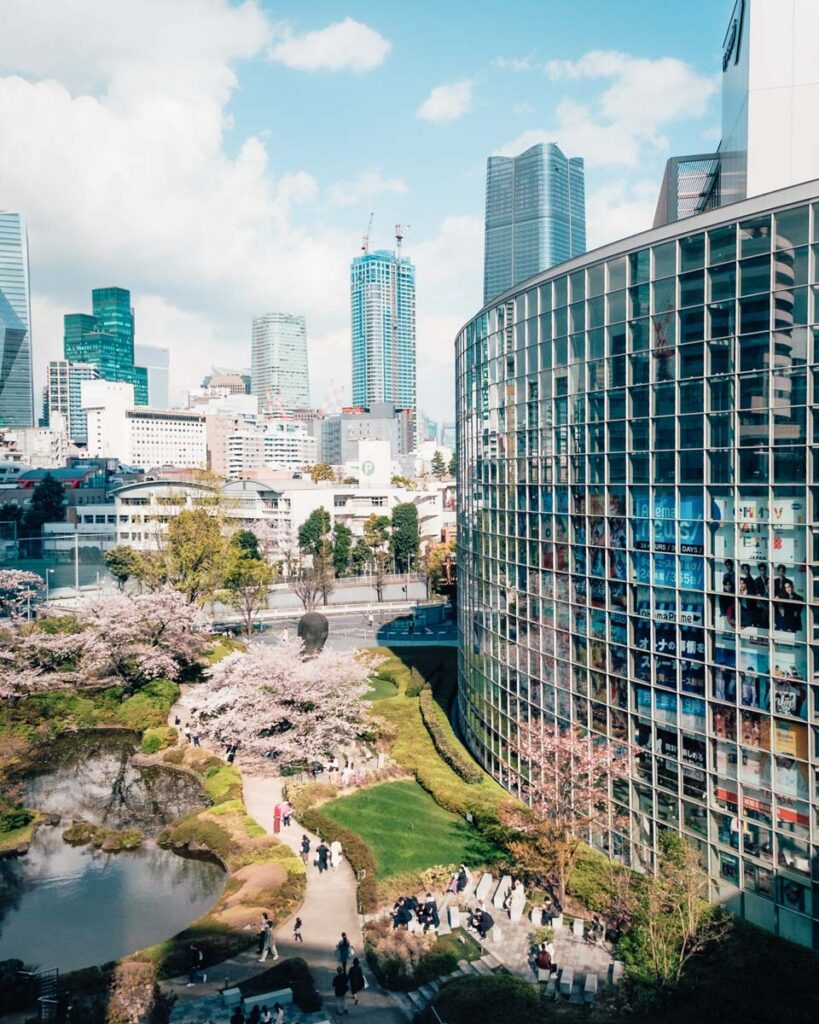
- Go museum hopping in the Roppongi Art Triangle, which includes the Mori Art Museum, Suntory Museum of Art, and the Tokyo National Art Center.
- Enjoy panoramic city views from the Mori Tower Observation Deck (aka Tokyo City View) at Roppongi Hills.
- Experience the wild nightlife in Roppongi’s many bars, lounges, and nightclubs.
Recommended accommodation in Roppongi
Budget: Sotetsu Fresa Inn Tokyo Roppongi
Affordable accommodation less than half a mile from Roppongi Hills. Services available for an additional fee include massage and a buffet breakfast.
Mid-range: Act Hotel
This hotel has a spacious patio with ambient lighting and offers free coffee, tea, and soft-serve ice cream.
Luxury: Mitsui Garden Hotel
Modern hotel in the heart of Roppongi with an onsite restaurant offering sweeping city views, including Tokyo Tower.
Odaiba
Stay here for: family fun, indoor activities, everything you need in one place
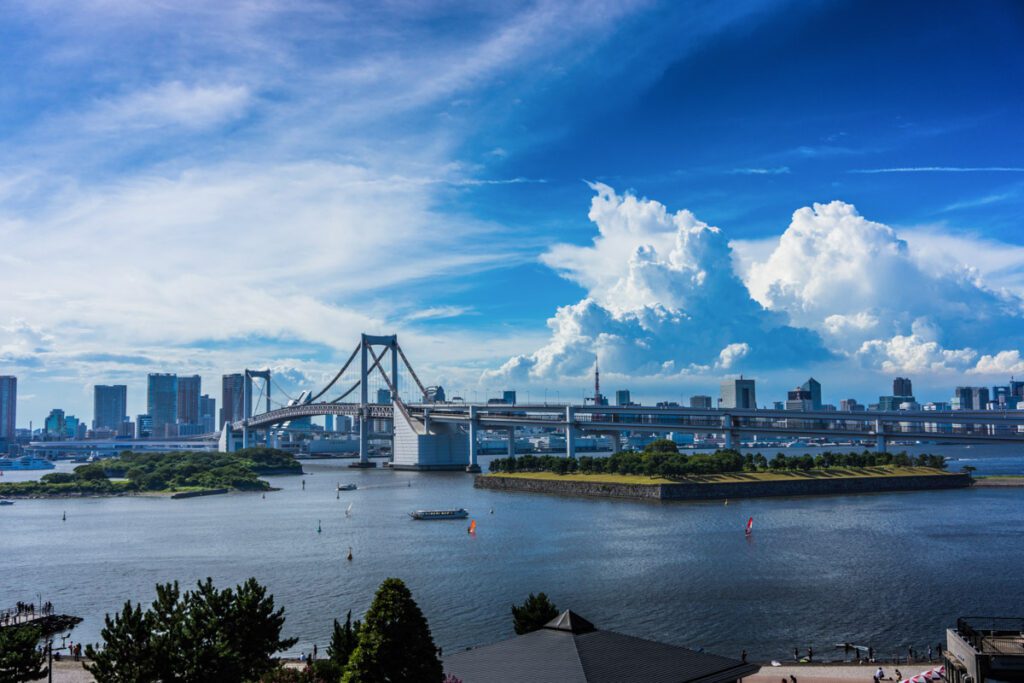
If you’ve ever wanted to time-travel to the future, Odaiba is the place for you.
This man-made island in Tokyo Bay offers high-tech attractions, futuristic architecture, and innovative entertainment on a cosmopolitan waterfront.
Odaiba probably has the highest density of tourist attractions of all the Tokyo neighborhoods and a lot of them are child-friendly, making this a popular “staycation” spot for Tokyo families.
Traveling with kids? We have a guide to help you plan the perfect family trip to Japan!
If you’re looking for historic sites and traditional Japanese culture, this isn’t it. You won’t find ancient temples or shrines here. What you will find are whacky experiences and innovations that will make you say, “only in Tokyo!”.
Most central subway stop: Odaiba-kaihinkōen Station
Top things to do in Odaiba
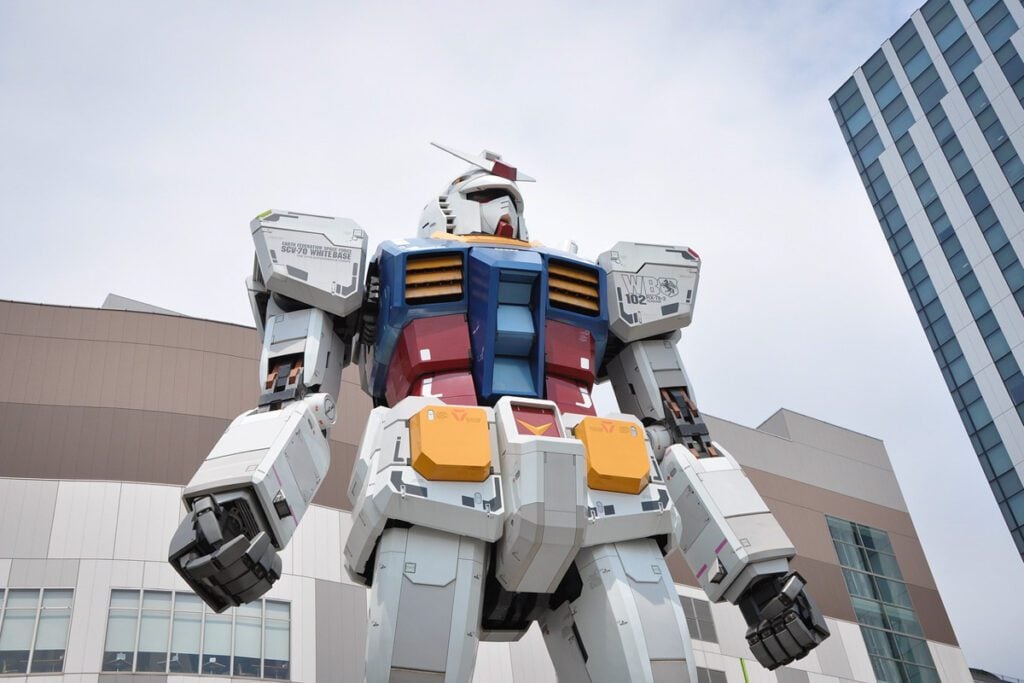
- Embark on a sightseeing tour to snap photos of iconic landmarks, such as the Gundam Statue (a giant robot), Rainbow Bridge, and the replica Statue of Liberty.
- Enjoy an urban beach day at Odaiba Marine Park.
- Feel like a kid at Tokyo Joypolis, an indoor amusement park with rides, games, and VR experiences.
Recommended accommodation in Odaiba
Budget: Sotetsu Grande Fresa Tokyo Bay Ariake
Technically located on the neighboring island of Ariake, this reasonably-priced hotel is just a 20-minute walk from Odaiba Beach.
Mid-range: Grand Nikko Tokyo Daiba
The upper floors in this high-rise hotel boast panoramic views of Tokyo Bay. With multiple restaurants and cafes onsite, an indoor pool, and a large gym, you’ll have everything you need.
Luxury: Hilton Tokyo Odaiba
Waterfront hotel with onsite spa, pool, and an outdoor jet bath with views of the Tokyo skyline. All rooms have balconies, and there’s a free daily shuttle to Tokyo Disneyland.
Akasaka
Stay here for: budget-friendly hotels and a quieter feel
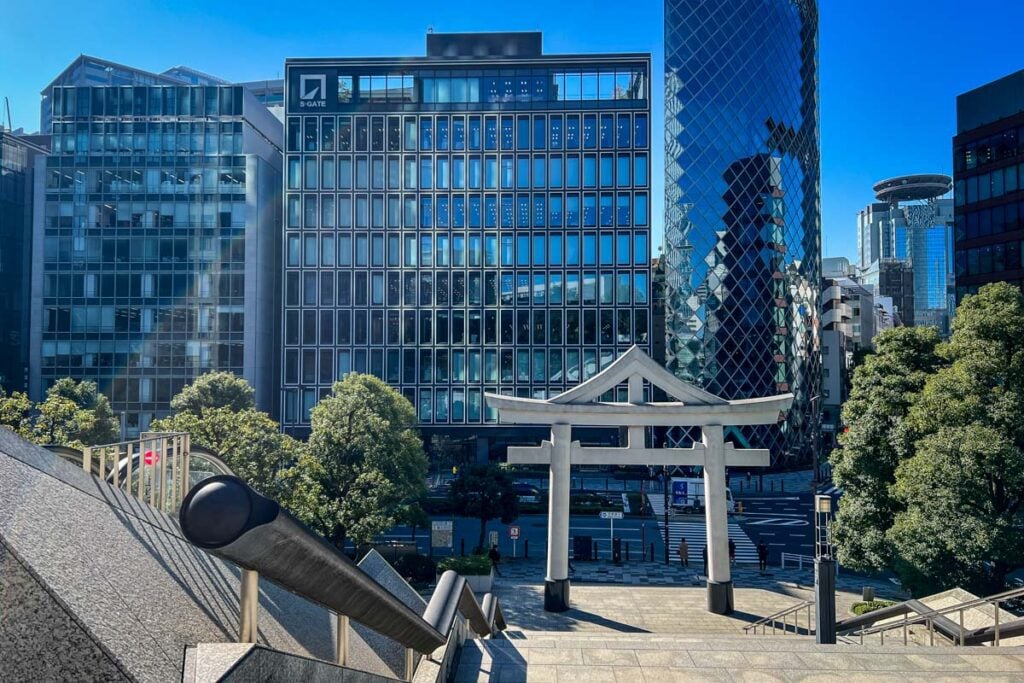
While Akasaka doesn’t have the same recognition as Shinjuku or Shibuya, it does offer really great budget-friendly hotel options, which is why we’ve stayed here on our last two trips to Tokyo.
It’s also far enough away from the hustle and bustle of the more popular areas that are packed with tourists, giving you a more relaxed and local feel.
That said, there aren’t a ton of big attractions in Akasaka itself, so you’ll need to spend more time on the subway in order to explore Tokyo to its fullest.
Most central subway stop: Akasaka Station
Top things to do in Akasaka
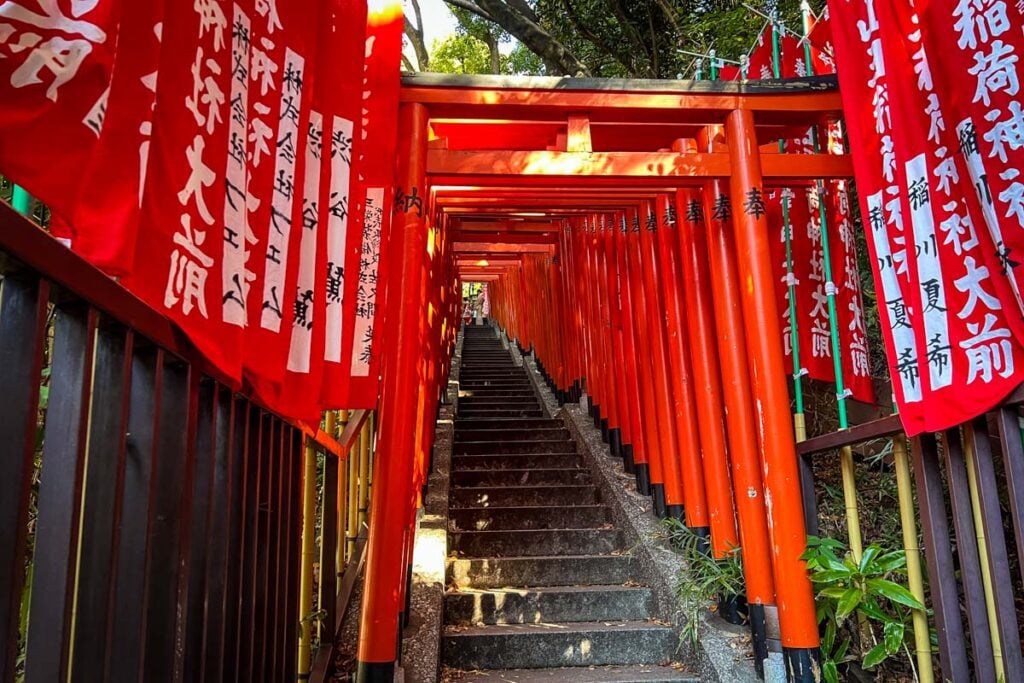
- Visit Hie Shrine, whose orange torii gates make it look like a smaller version of Fushimi Inari in Kyoto.
- Get excellent coffee at BunCoffee.
- Visit the National Art Center.
- Wander around the Meiji Jingu Gaien park.
Recommended accommodation in Akasaka
Budget: Hotel Mystays Premier Akasaka
These compact-but well-designed rooms are a great choice for budget travelers.
Mid-range: Mimaru Akasaka
This chain of apartment-style rooms is an excellent choice for families. The rooms are incredibly spacious, and they offer great value. This is where we personally stayed and we loved it!
Luxury: The Okura
Well-appointed rooms and facilities make this hotel a great splurge option.
Bonus neighborhood: Shimokitazawa
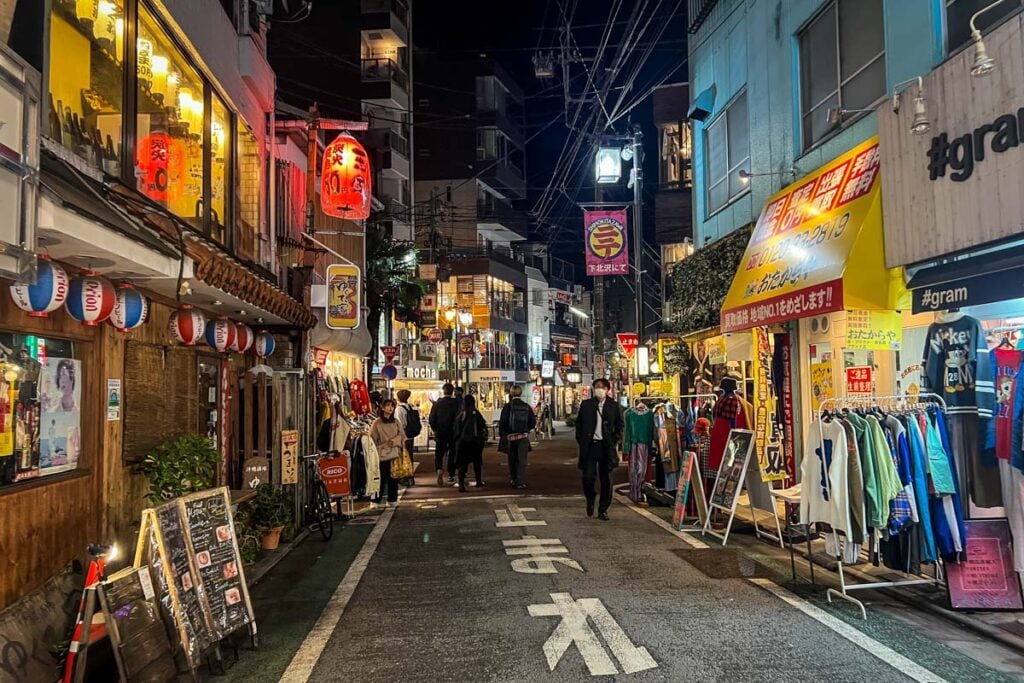
This neighborhood isn’t very well-known amongst foreign travelers, and I doubt you’ll find it on any other lists of “best places to stay”. But next time we’re in Tokyo, this is where we want to stay!
We hadn’t heard of it until one of our last days in Tokyo on our 2023 trip, when we had dinner in a local family’s home through an organization called Nagomi Visit. The couple’s home is in the Shimokitazawa neighborhood, and we immediately fell in love with this area.
It has all sorts of vintage shops, small restaurants, buzzy izakayas, and lots of young people out and about.
There is a local vibe and very few tourists. Plus, it’s a very short subway ride from Shibuya, meaning it’s not far out of the way of many attractions you’ll want to see.
The downfall is there aren’t many hotels in this area, but here are two we’ve found:
- Mustard Hotel: This reasonably-priced hotel has a minimalist design and is located in a quiet part of Shimokitazawa.
- illi: This apartment-style hotel has a beautiful design and is perfect for a family who needs a little extra space.
Best place to stay in Tokyo in our opinion…
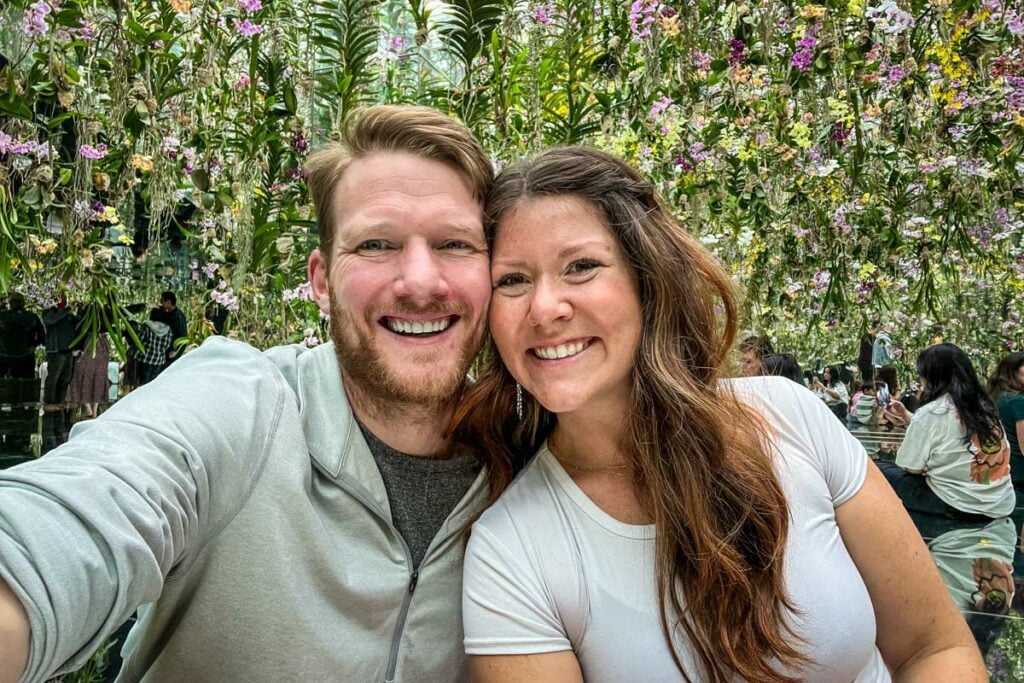
If it’s your first time in Tokyo, we would personally recommend staying in Shibuya or Shinjuku because it will be the most convenient for seeing all the major sights. Both neighborhoods have a wide range of hotels as well, so you’ll have lots of options to choose from.
If you’re on a tight budget and don’t want to stay in a shoebox-size room, Akasaka has some of the best options; however, you’ll be spending more time in transit as there aren’t all that many main attractions in this neighborhood.
For our next visit to Tokyo, we hope to stay in the Shimokitazawa neighborhood, which has such a fun local vibe!
Getting around Tokyo
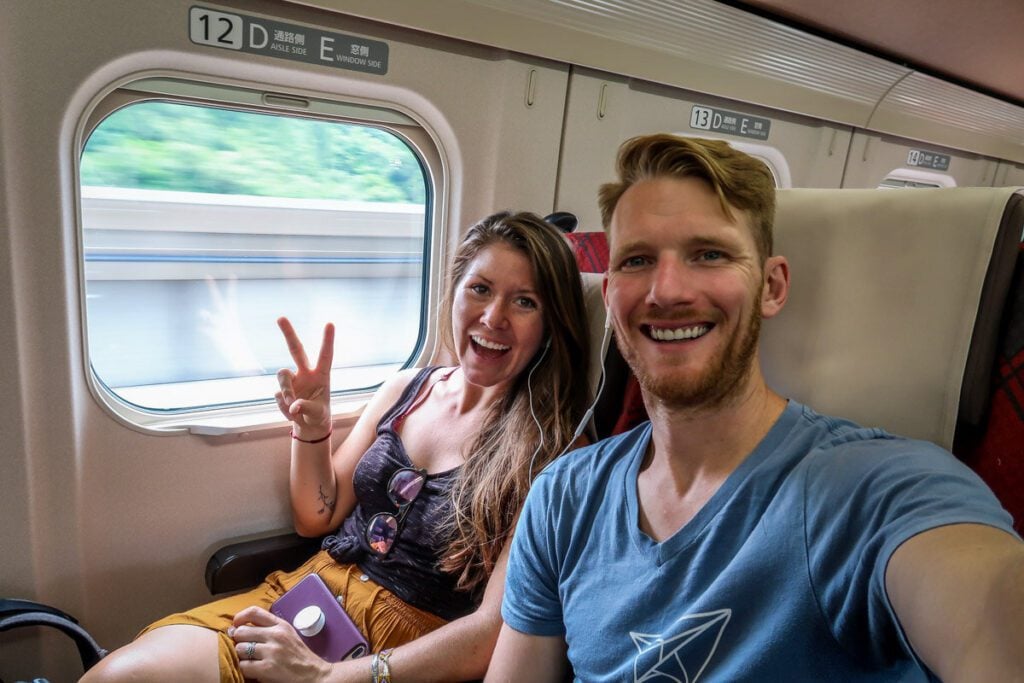
Public transportation is without a doubt the best way to get around Tokyo. The trains and metros are some of the cleanest and most efficient in the world, and the rail system is extensive.
There are two major companies that operate the subway system in Tokyo: Toei and Tokyo Metro. Tokyo Metro has 9 different subway lines, whereas Toei only has 4 lines.
Transit cards
Instead of purchasing tickets each time you ride the subway, download a transit card onto your phone (Apple Wallet or Google Wallet, depending on your phone). It will make your life so much easier, trust me!
You can load money onto it and you just tap your phone on the turnstile sensor when entering the metro. No need for a ticket! You can also use this to pay for purchases at most convenience stores.
There are 3 transit cards in Japan: Suica, Pasmo, and ICOCA and they’re all relatively the same.
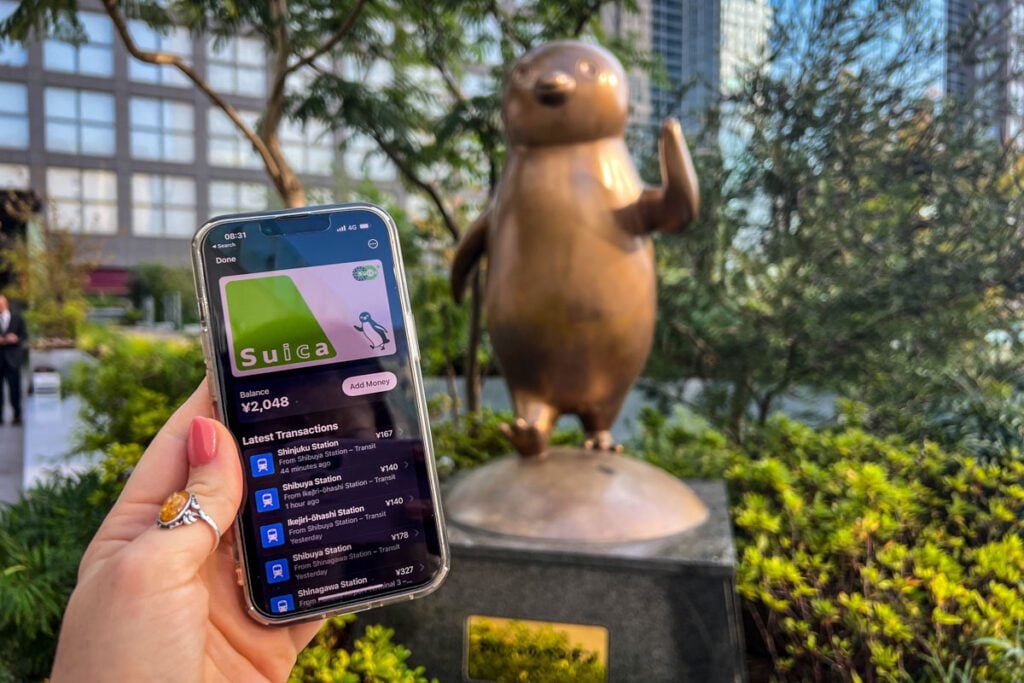
Tokyo Metro 1-Day Pass
If you plan on doing quite a bit of exploring in a day, another cost-effective option is to purchase the Tokyo Metro 1-Day Pass. The 1-day pass only costs 600 yen (~$4 USD) and you can purchase it at any ticket vending machine.
There’s also a Toei 24-hour pass (700 yen and gives you access to Toei subways and buses). You should only get the Toei pass if your hotel is close to a Toei station with no Tokyo Metro stations nearby.
Insider Tip: The Tokyo metro system can feel pretty overwhelming at first glance. Just take a look at that spaghetti-like map above! But if you download the Japan Travel by Navitime (available for iOS and Android), you will be saved a HUGE headache. It is literally a lifesaver for navigating all transportation in Japan.
The Greater Tokyo Pass
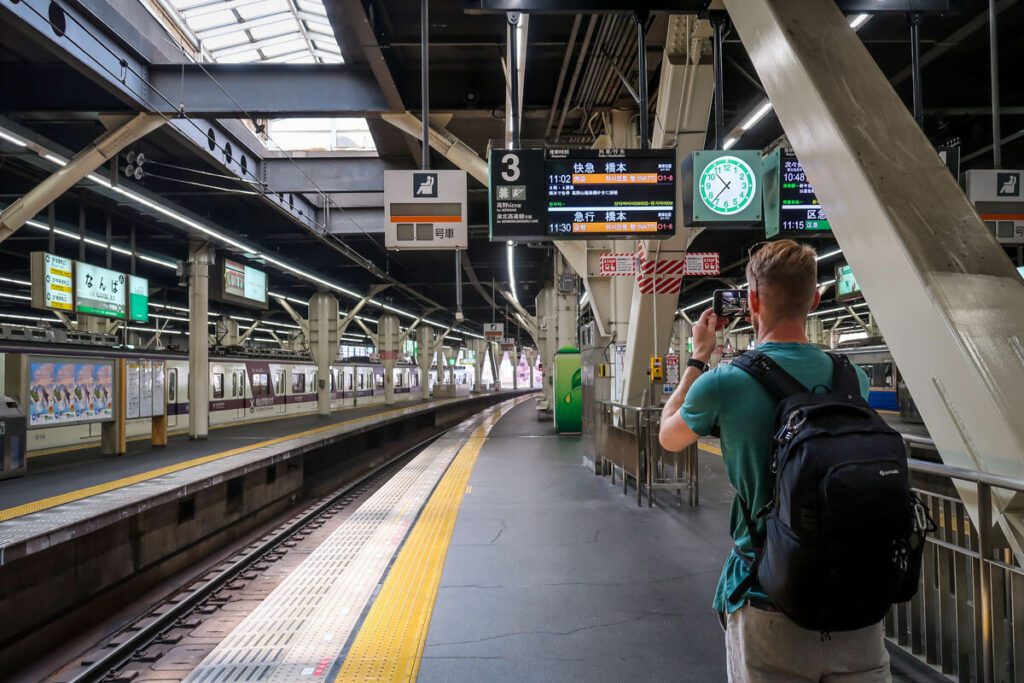
An alternative would be to purchase the Greater Tokyo Pass, a 3- or 5-day pass that grants purchasers unlimited rides on railways, trams, and ordinary fixed-route buses around the Tokyo metro area and surrounding suburbs.
The cost of the 5-day pass is 7,200 yen (~$48 USD) for adults, or 6,000 yen (~$40 USD) for the 3-day pass.
You can do your own research into the valid lines included on the pass to see if purchasing one will save you money, depending on which places in Tokyo you plan to visit.
What about the Japan Rail Pass?
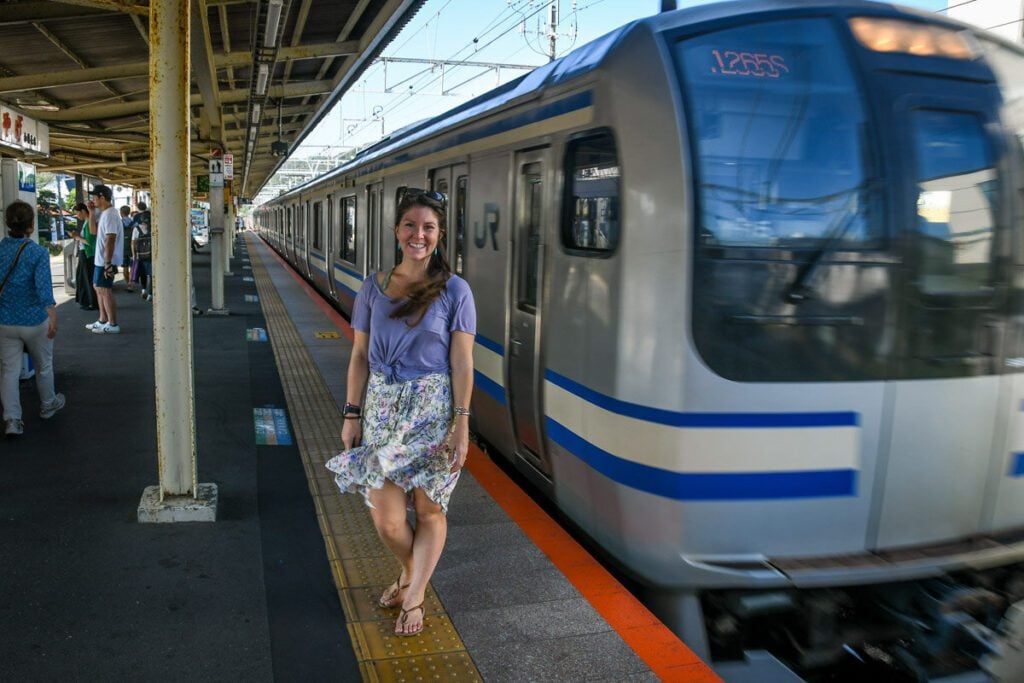
Does it make sense to purchase the JR Pass for your visit to Tokyo?
Here’s the simple answer:
- If you are staying only in Tokyo: NO
- If you will be traveling to at least 2 more places in Japan: YES
Read more about how much money the Japan Rail pass will save you and find out how to get it. We have a whole guide and are happy to answer any questions you may have.
FAQs about where to stay in Tokyo
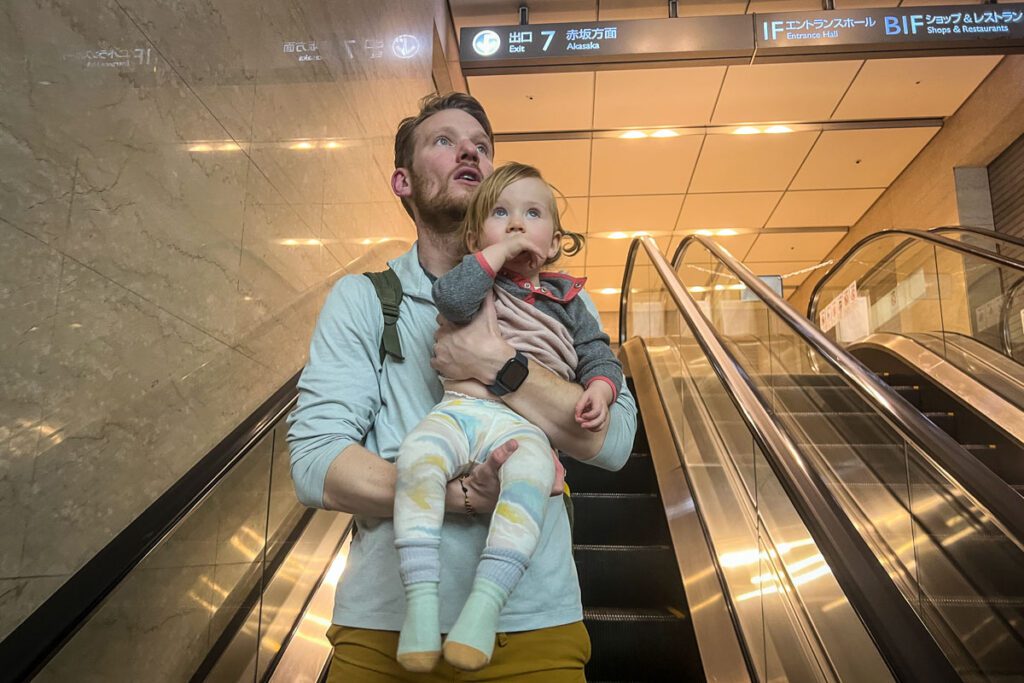
We’ve covered a lot already in this guide on where to stay in Tokyo, but here are the answers to some other popular questions regarding where to base yourself.
What is the safest area to stay in Tokyo?
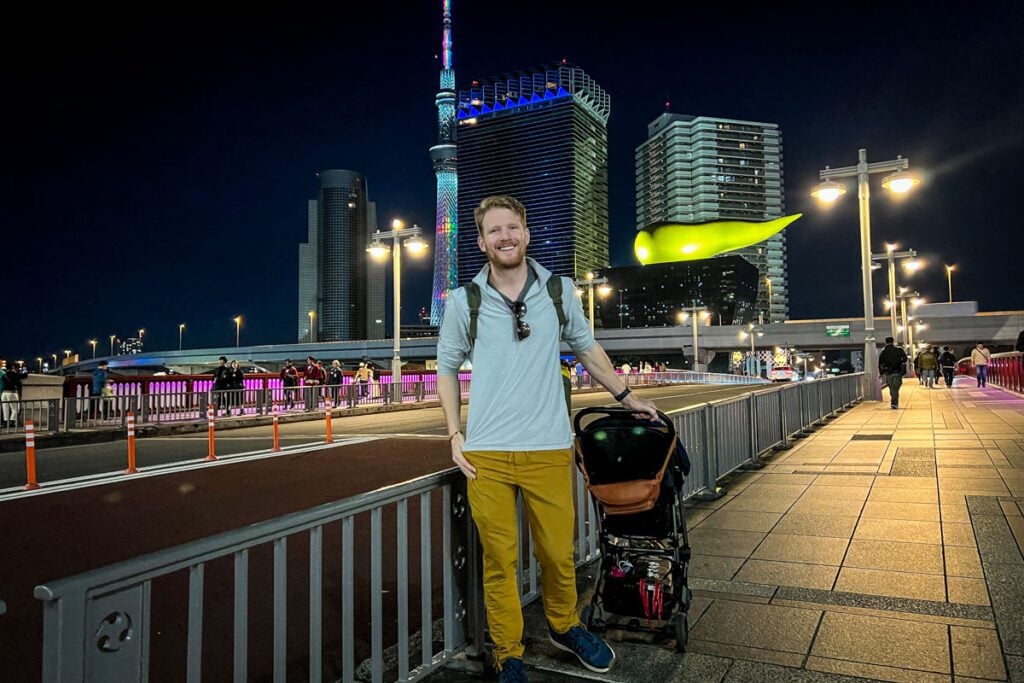
Japan in general is a very safe country, including most of Tokyo. In fact, Tokyo is often listed as one of the safest cities in the world.
We’ve heard tons of stories of people losing their wallet on the Tokyo subway and having it returned to them. Likely your biggest chance of anything unsavory happening would be getting pickpocketed by another foreigner in one of the busy tourist districts, like Asakusa. As with any big city, just be cautious in crowded areas.
We can only speak to our personal experiences, but we’ve always felt very safe in Tokyo. We personally think all neighborhoods listed in this guide feel very safe, even for wandering at night.
One area that may feel slightly dodgy in the later hours of the evening is Kabuki-cho, the “red light district” in Shinjuku. It isn’t necessarily unsafe, just one of the areas where you’ll find people stumbling out of bars late at night. If that’s not your vibe, you may want to stay elsewhere.
Insider Tip: We always recommend getting travel insurance to make sure you’re covered in case anything gets stolen or you run into other emergencies. We’ve never had to use it in Japan, but it has saved our butts more than once traveling elsewhere!
Is Tokyo a walkable city?
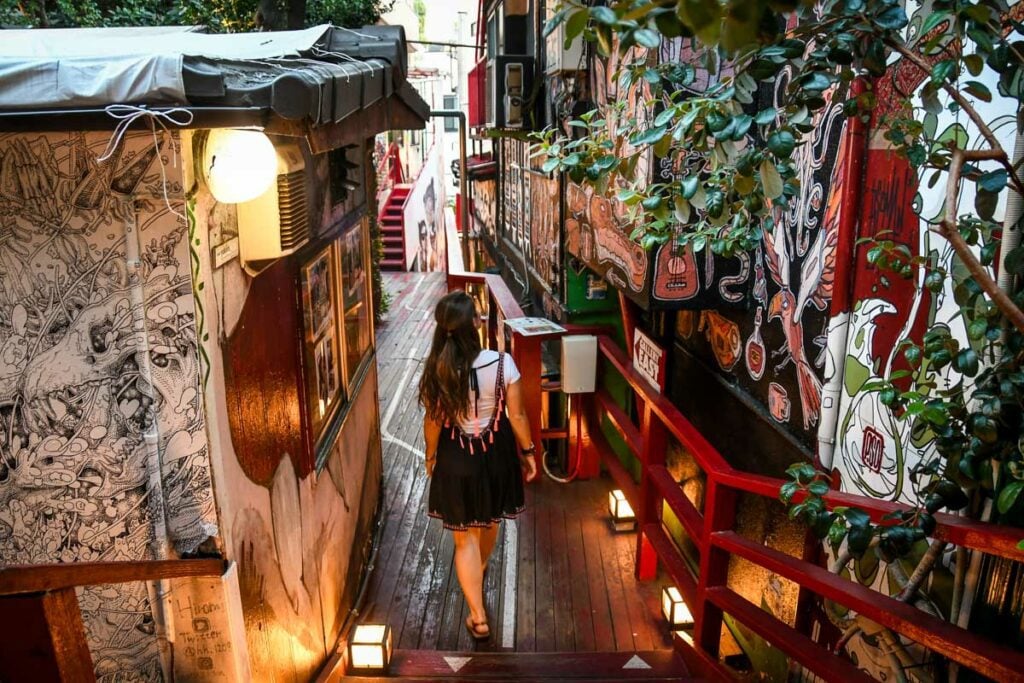
I mean, there are areas where you certainly can and will walk around. But Tokyo is MASSIVE, and if you want to explore more of the city than your immediate neighborhood (which you definitely should!), you’ll need to use public transportation.
The good news is that Tokyo’s public transportation is top-notch – clean, efficient, and can easily get you anywhere in the city. For more info, jump to our section on how to get around Tokyo.
Where to avoid staying in Tokyo?

For the sake of convenience, we would avoid staying too far away from the city center.
We chose this list of the best neighborhoods to stay in Tokyo because they all have a lot to offer in terms of fun things to do, great restaurants, and top-rated accommodations. Staying way out in the ‘burbs (have we mentioned Tokyo is big?) might give you fewer options.
Is it better to stay in Shibuya or Shinjuku?
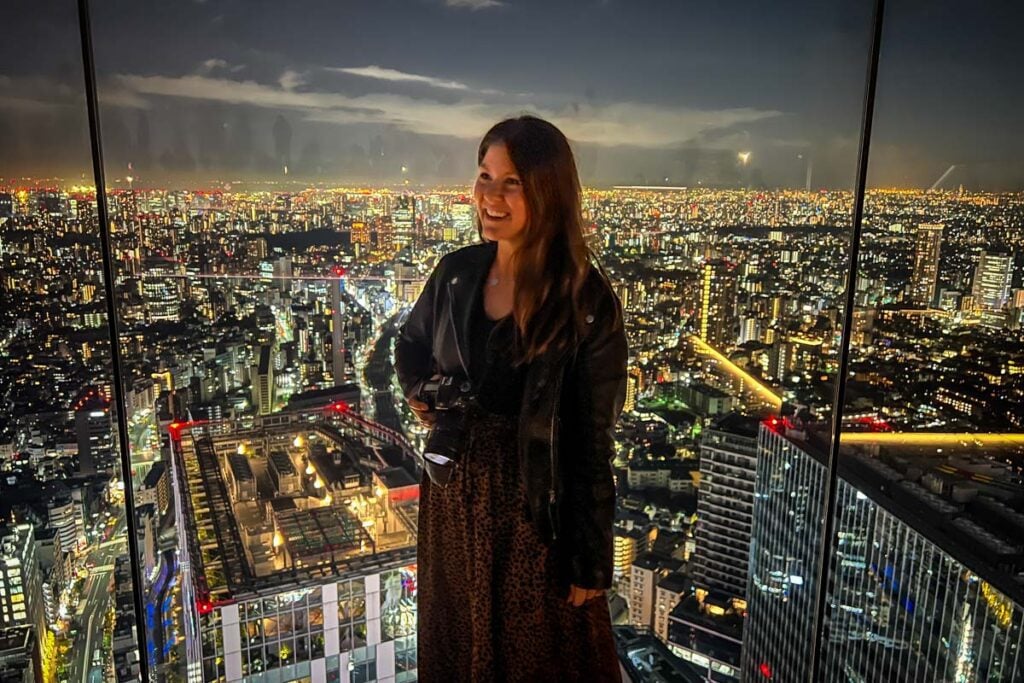
The answer to this question really depends on what it is you’re looking for. Both are great options and you can’t really go wrong either way, but here are a few things to think about:
- Accommodations: Shinjuku has some dirt-cheap-but-not-great places to stay, while Shibuya has more value-for-money options. Shinjuku also has more luxury hotels than Shibuya.
- Food: Shinjuku is generally considered the better foodie area, but Shibuya has no shortage of great places to eat.
- Transportation: Both Shinjuku and Shibuya are well-situated and have central metro stations for ease of transportation, but Shinjuku’s station is bigger (literally the busiest railway station in the world!).
- Shopping: Shinjuku has more luxury brands, whereas Shibuya has more trendy boutiques. Since a lot of the shops in Shibuya are geared more towards younger consumers, they tend to be a bit more affordable.
- Things to do: Both Shinjuku and Shibuya are home to some of the most iconic sights in Tokyo, and both have plenty of entertainment options. The two are also only 3 stops (6 minutes) apart by metro, so you can easily explore both. If it’s nightlife you’re after, then Shinjuku is the way to go.
What is the best area to stay in Tokyo for food?
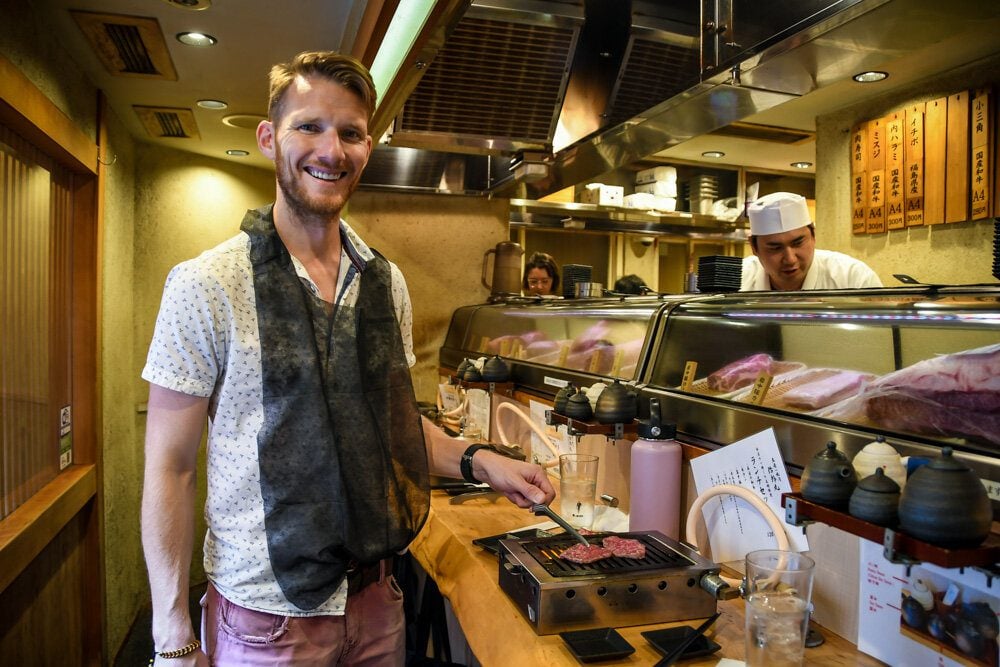
Shinjuku and Ginza are considered two of the best areas for foodies.
The bougie neighborhood of Ginza is home to multiple Michelin-starred restaurants, both Japanese and international. This could be a good choice if you’re traveling with more picky eaters. Ginza is also close to Tsukiji Outer Market, one of the best food markets in Tokyo.
Shinjuku is more traditional and generally more affordable, with late-night ramen and yakitori joints serving Japanese salarymen. It’s a pretty cool experience to cram yourself into a tiny bar or hole-in-the-wall restaurant that only seats 10 people and brush shoulders with locals.
Two of our absolute favorite ways to experience food culture on our travels are with food tours and cooking classes, and both Ginza and Shinjuku have tons of options.
More Tokyo travel resources
After 3 trips (and counting!), we’ve fallen head over heels for Japan—and we’ve gathered TONS of resources to help you plan your dream trip. Check out these other helpful articles when planning your trip to Tokyo…
- Start with our 5 Day Tokyo Itinerary for a perfect balance of top sights and off-the-beaten-path finds.
- Dive into our curated list of the best things to do in Tokyo to fuel your wanderlust.
- Discover the electric energy of Tokyo at night—from quirky bars to late-night food spots.
- Not sure where to stay? Our Tokyo neighborhood + hotel guide will help you choose the perfect home base.
- Wondering when to go? Our best time to visit Tokyo guide breaks it all down season by season.
- Planning to visit teamLab Borderless? Don’t miss our tips for getting the most out of this mind-blowing digital art experience.
- Escape the city with one of these best day trips from Tokyo.
- Dreaming of seeing Mount Fuji? Here’s how to plan the perfect day trip from Tokyo.
Still have questions? Check out our Ultimate Japan Travel Guide, or leave us a comment—we’d love to help you plan your Tokyo adventure!
Want to save time and energy on planning?
We’ve spent hundreds of hours (no joke!) researching for our 3 different trips to Japan, and we’ve been able to explore a lot of what this country has to offer!
We’ve compiled our experience to create the resource we wish we’d had when planning our trips to Tokyo!
Our Tokyo Planner is filled with tips and advice you won’t find anywhere else! It includes 10 fully planned, interchangeable itinerary days, access to a custom Tokyo map with all of our recommendations and resources such as hotel recommendations and a transportation guide.
Don’t miss your chance to grab our Tokyo map!
Get our custom Tokyo map sent straight to your phone! We loaded this map with all our favorite restaurants, sights, hidden gems, and more, so you can make the most of your time in Tokyo.
Just enter your email and we’ll immediately send you access instructions!
Save this article to Pinterest for later!
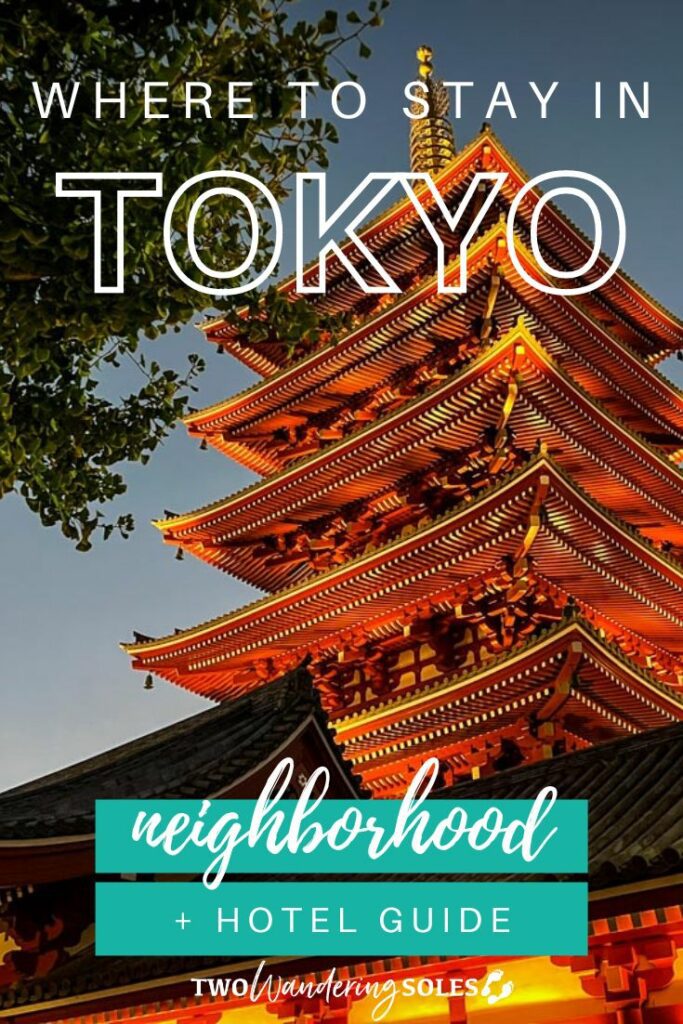
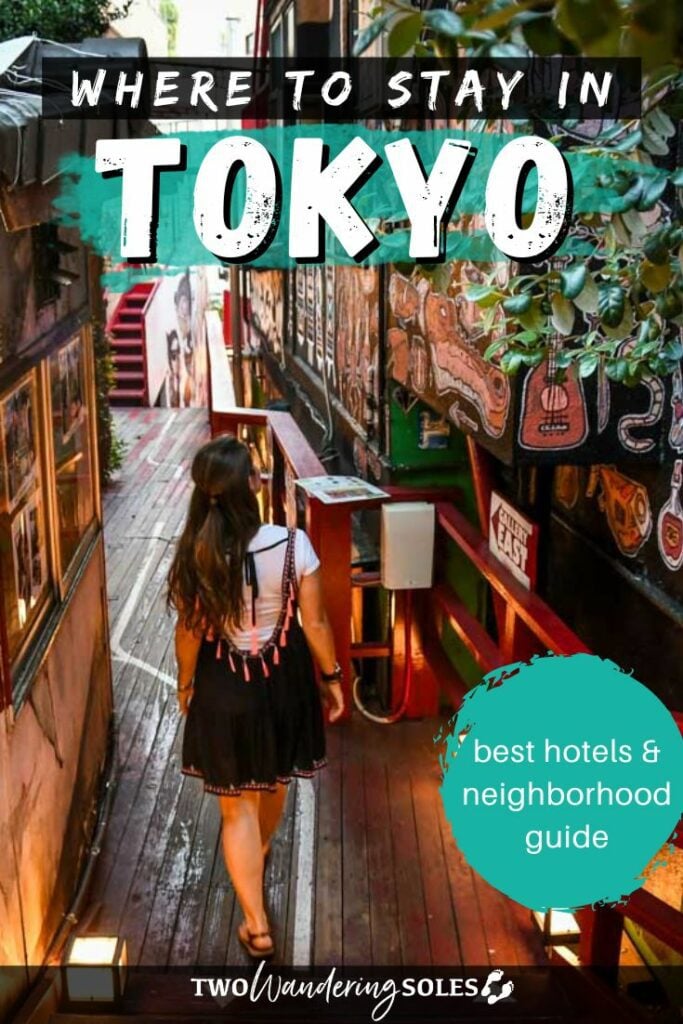
We want to hear from you!
Have you been to Tokyo before? Where did you stay? Which of these neighborhoods sounds like the best fit for you? Let us know in the comments below!

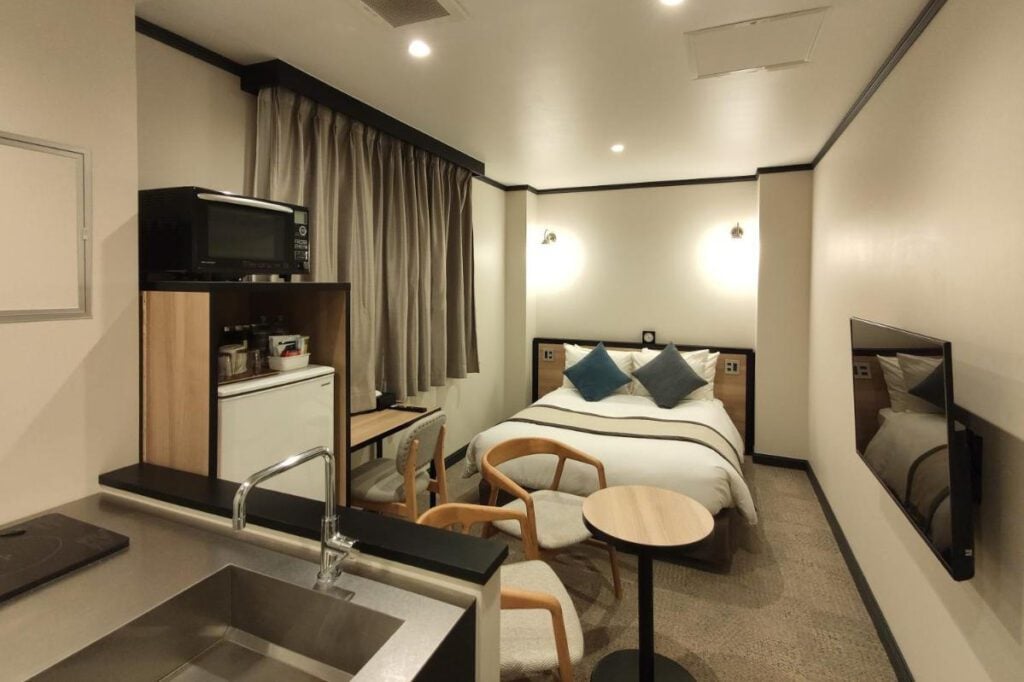
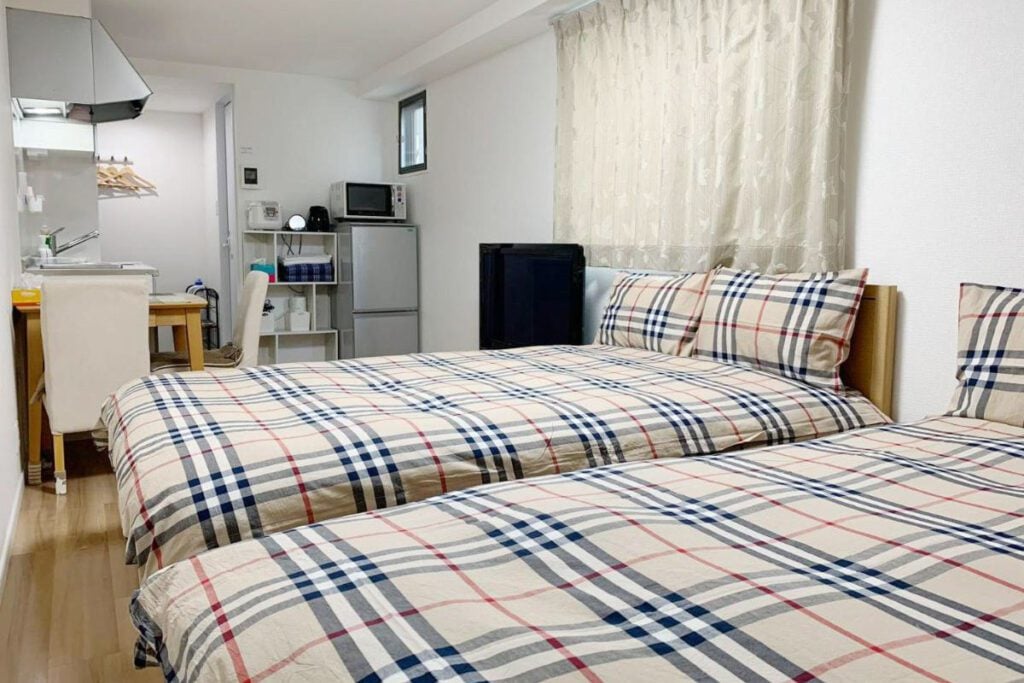
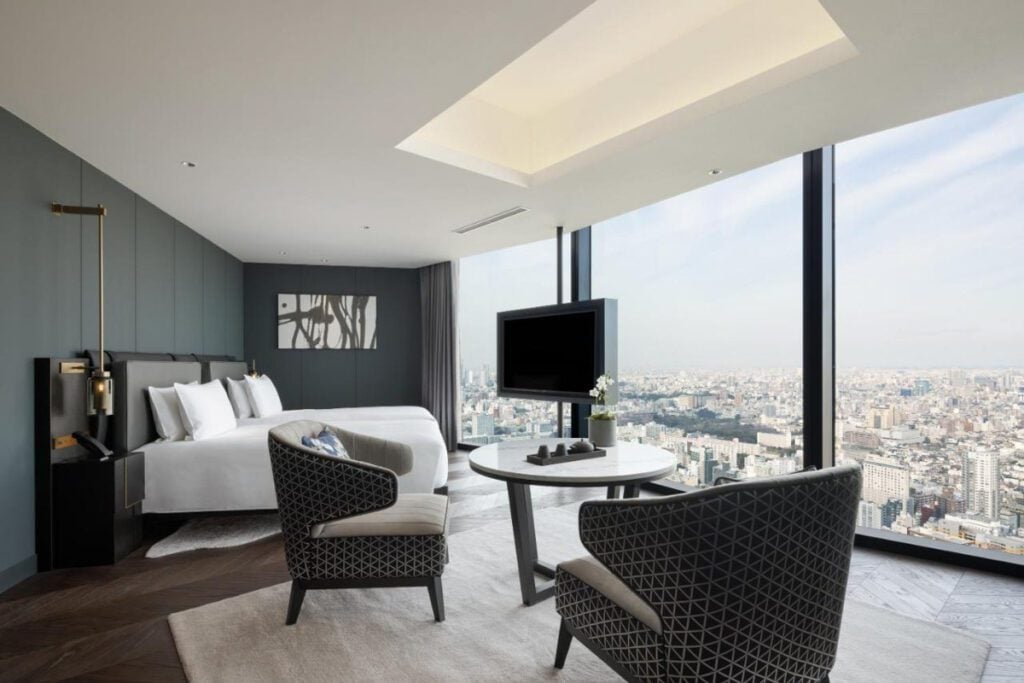
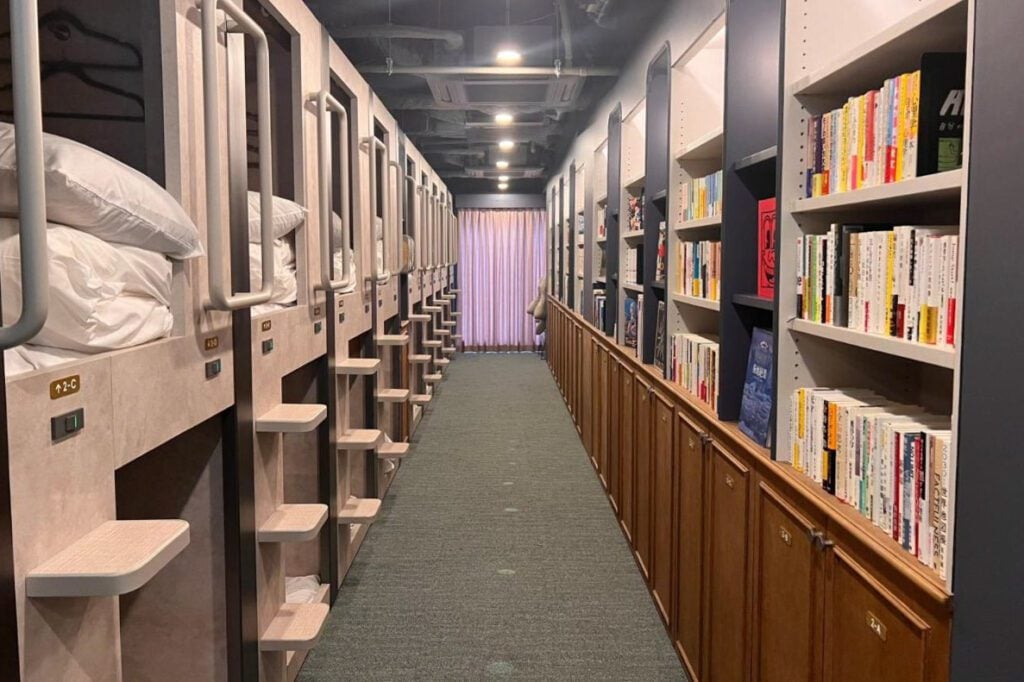
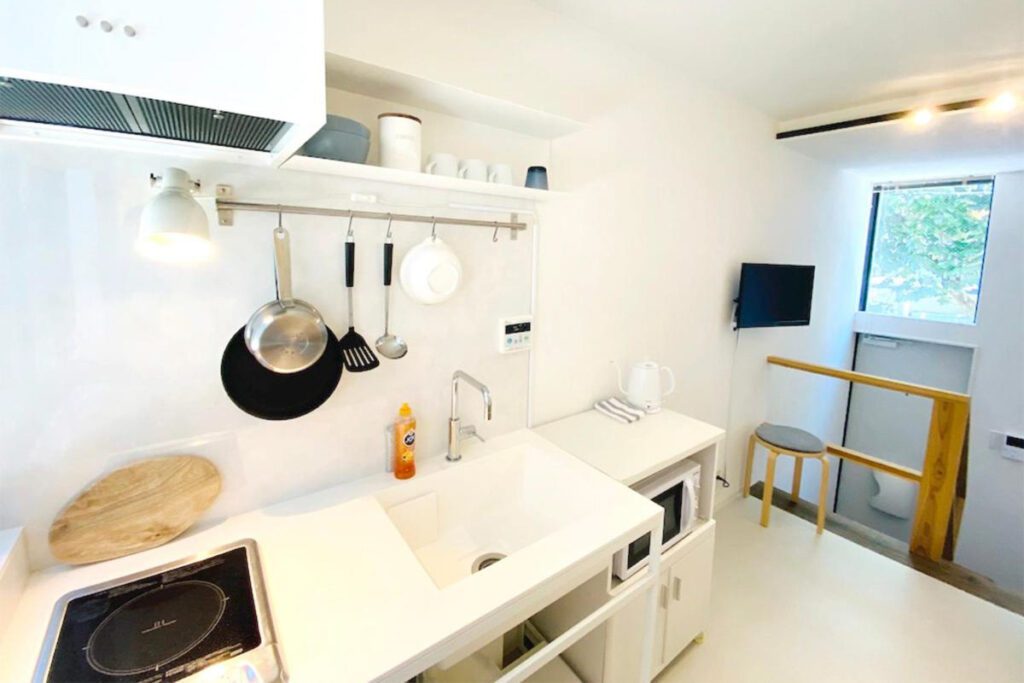
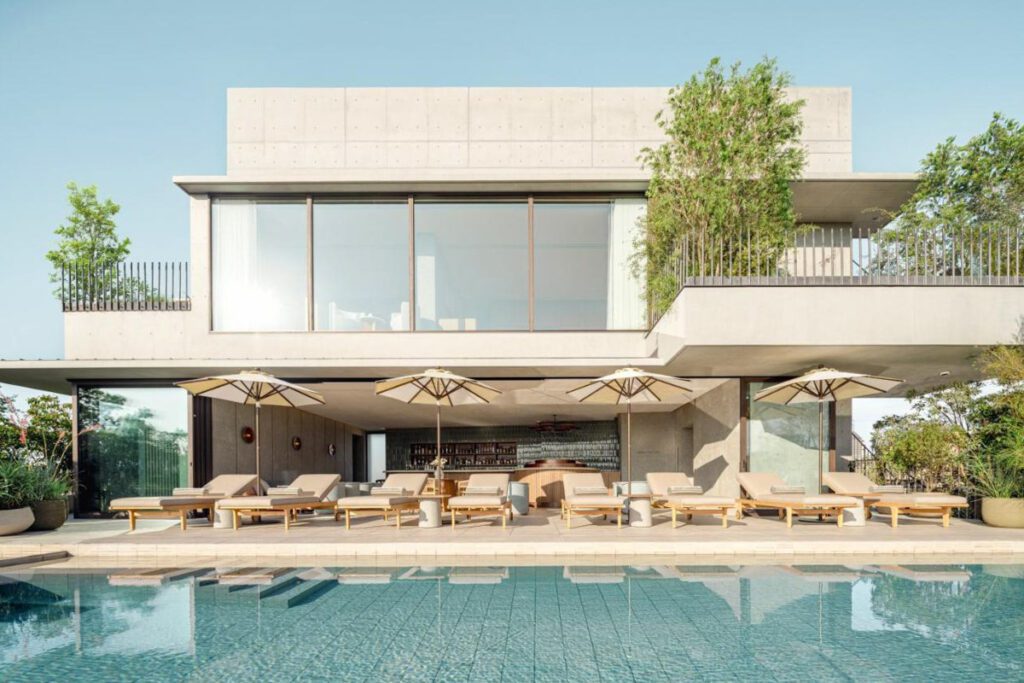
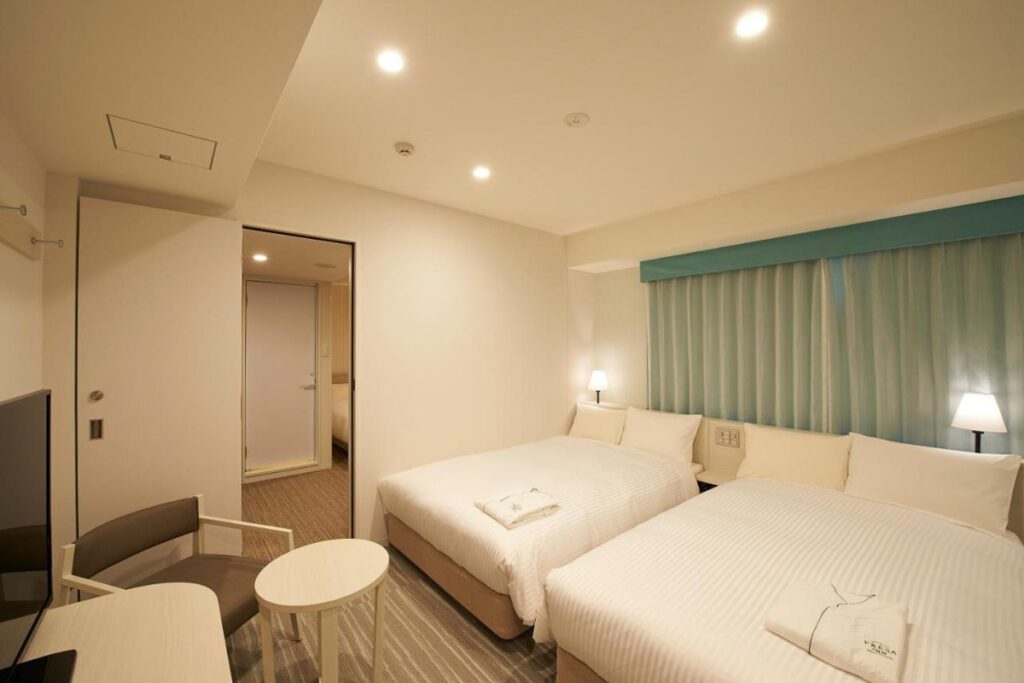
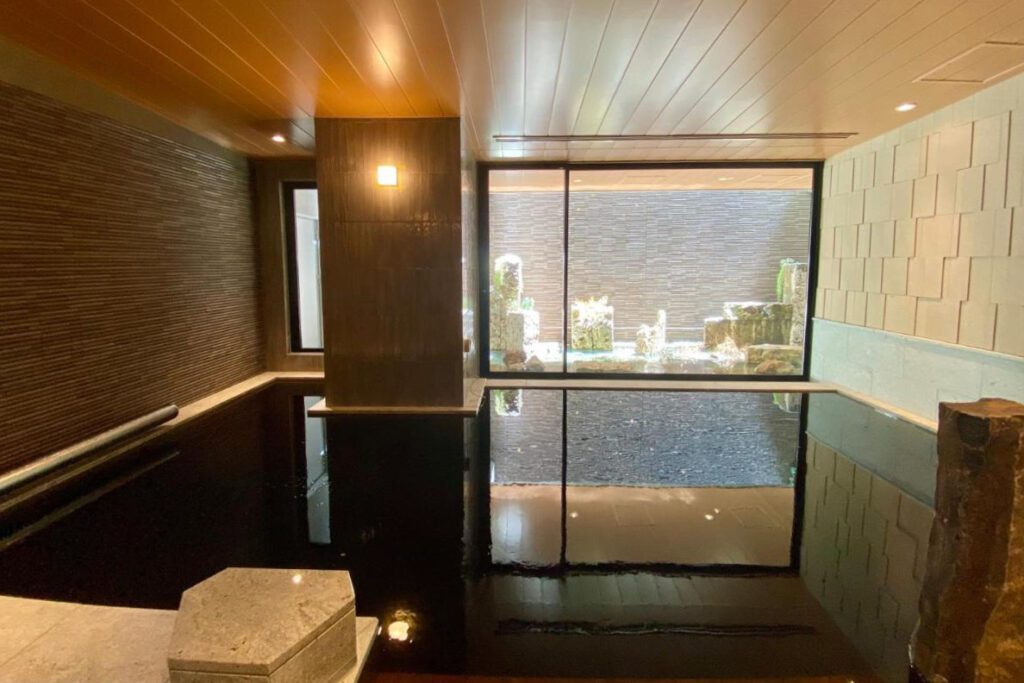
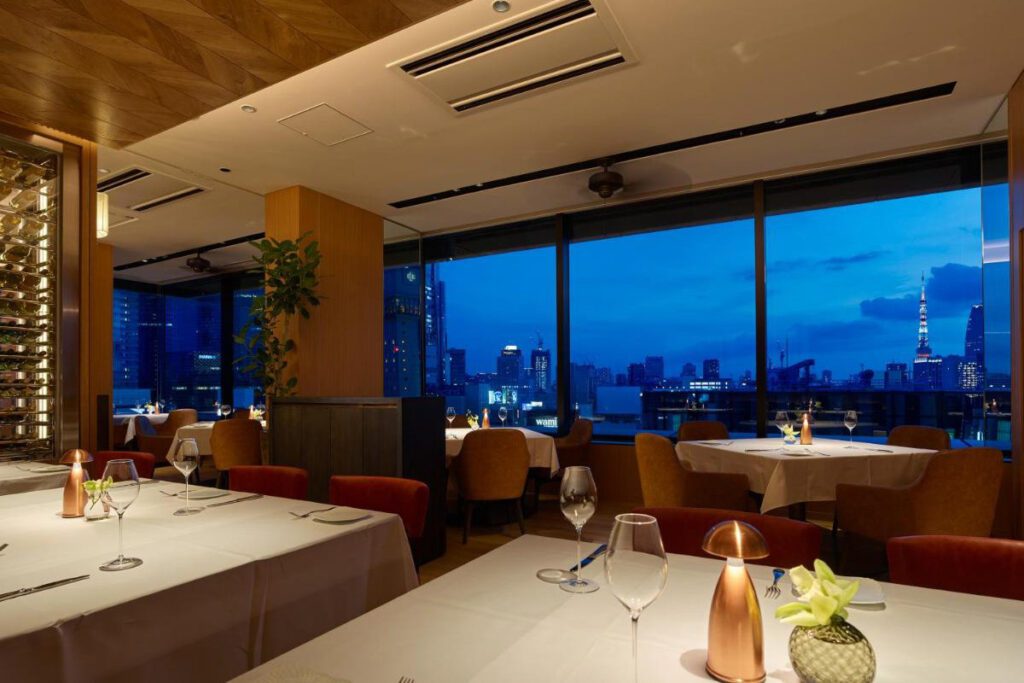
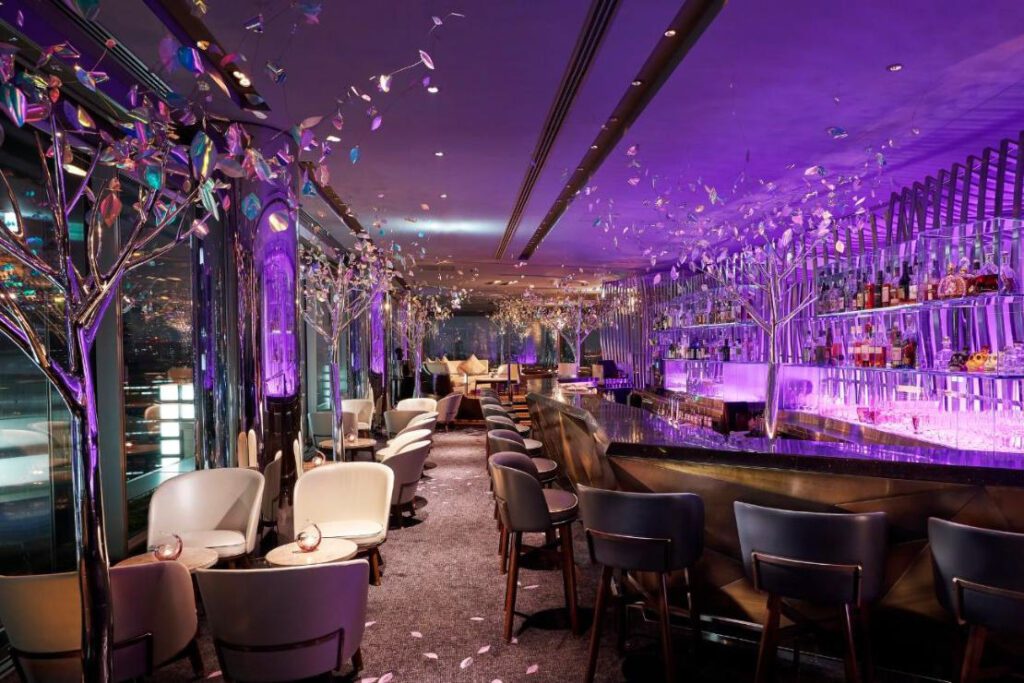
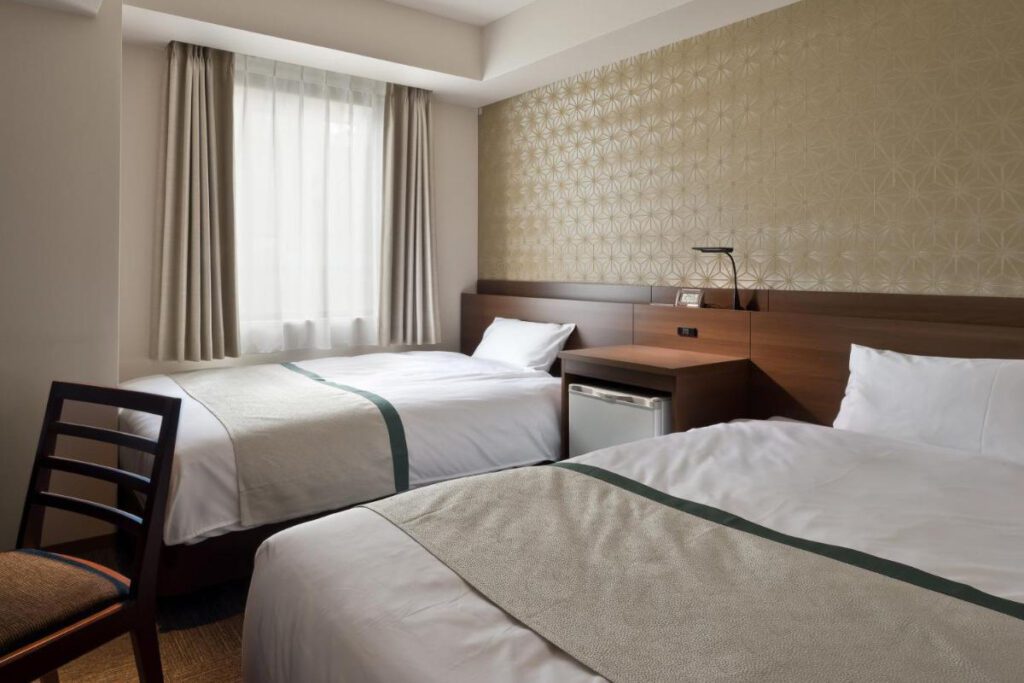
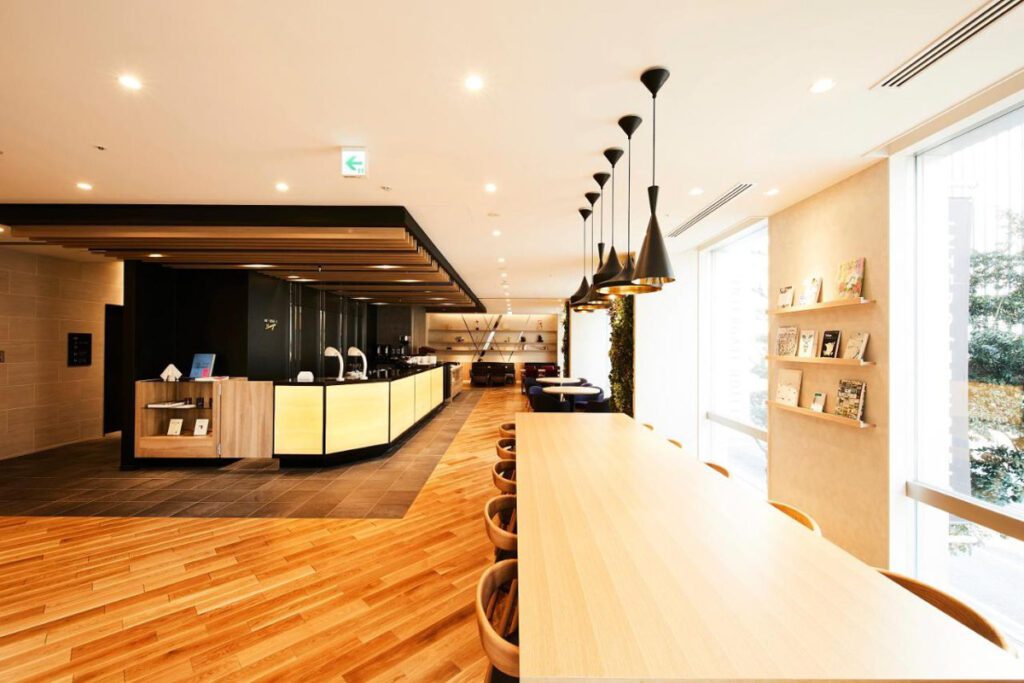
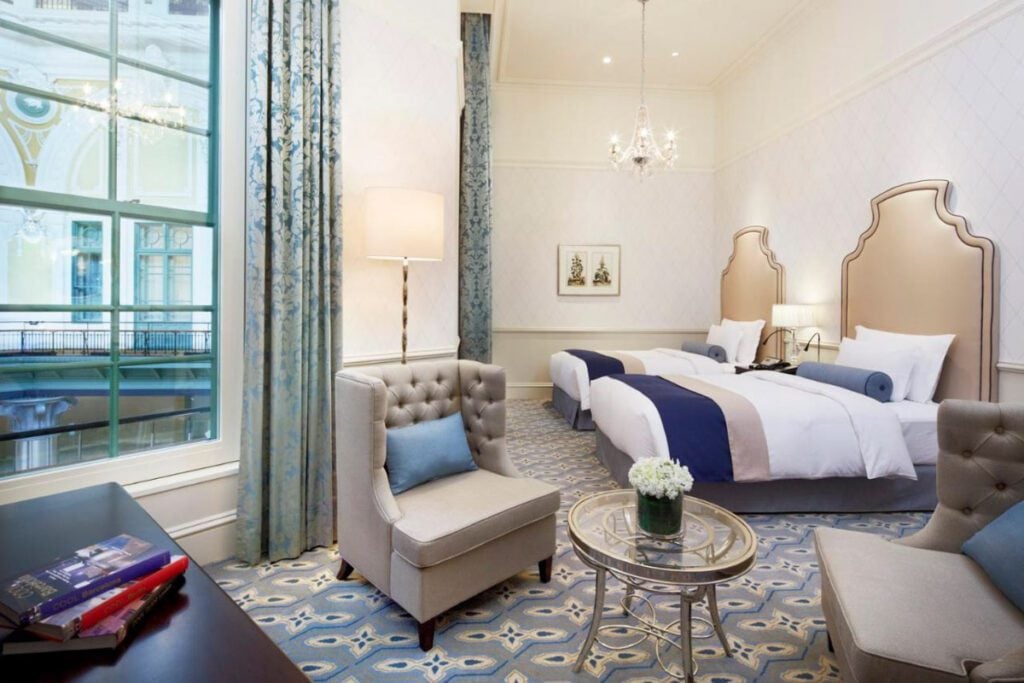
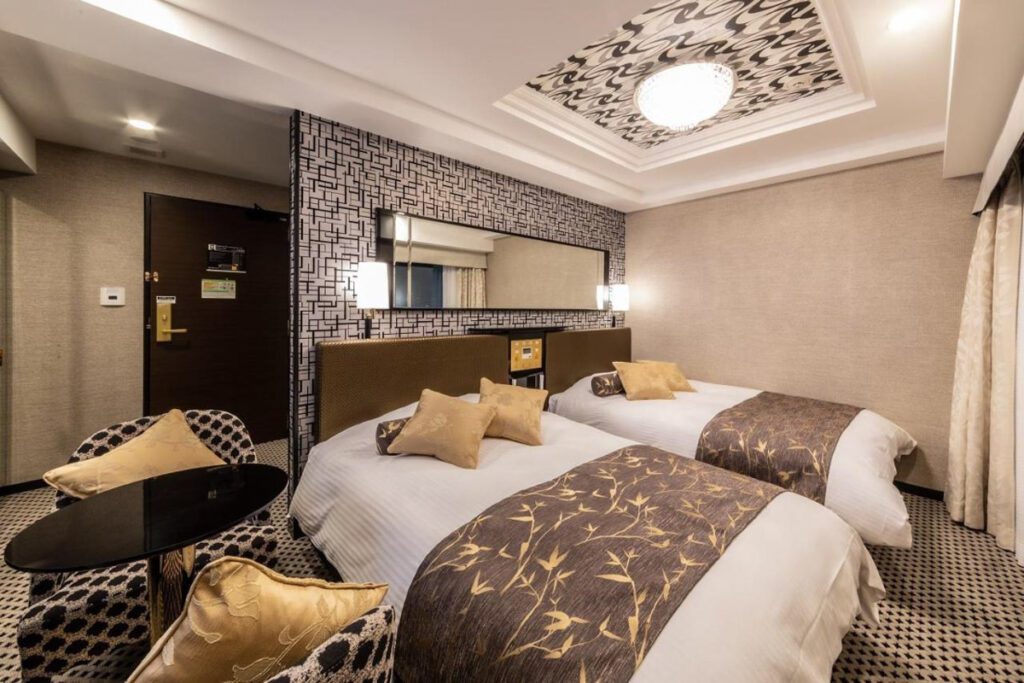
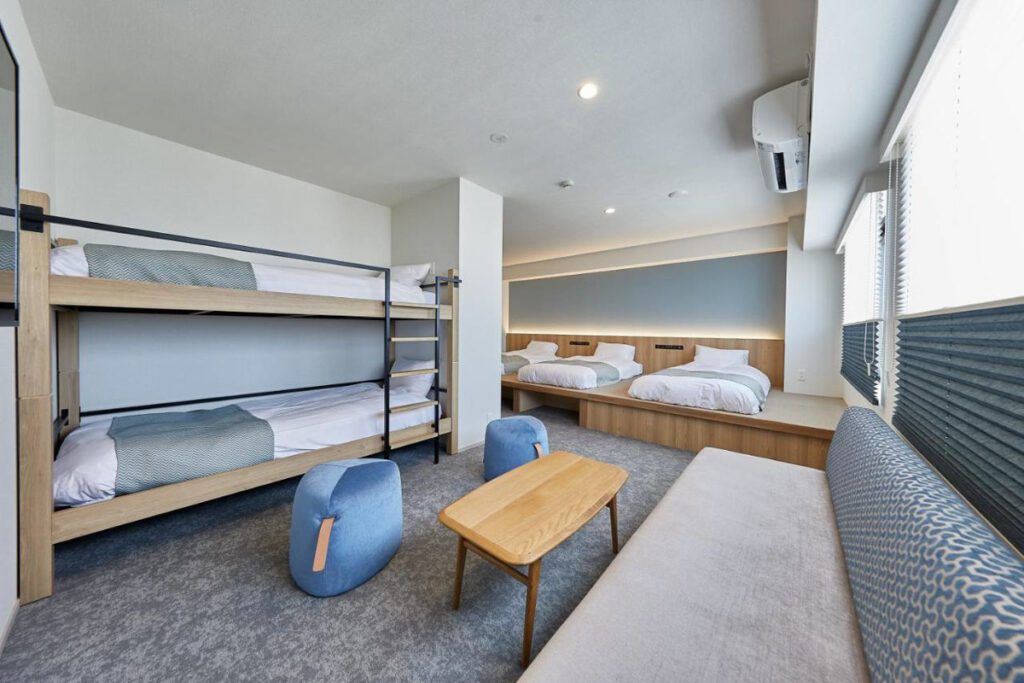
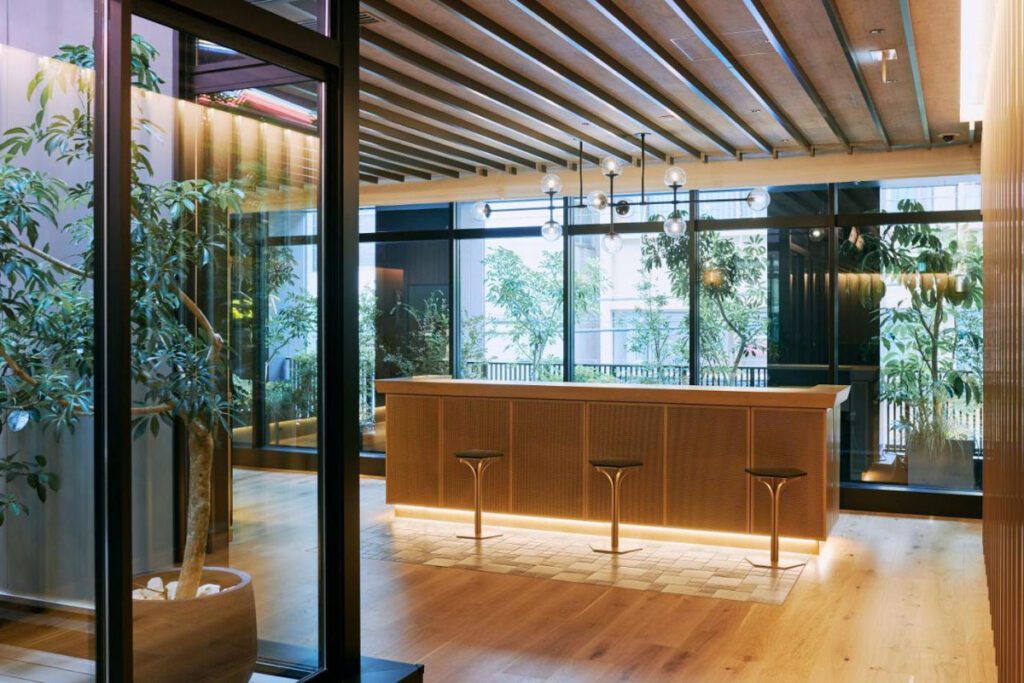
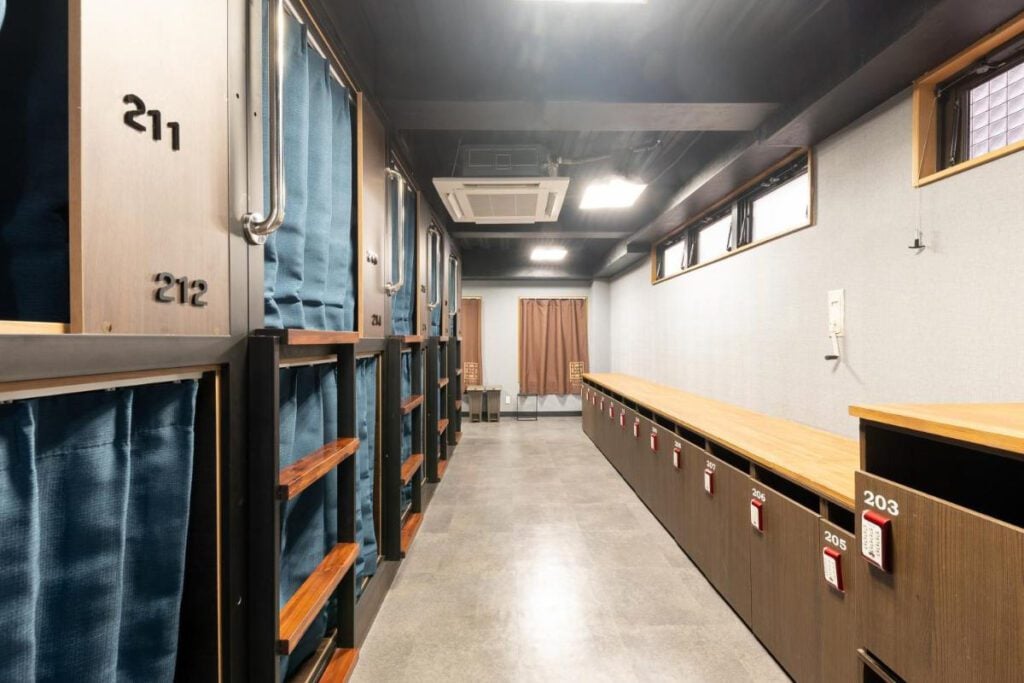
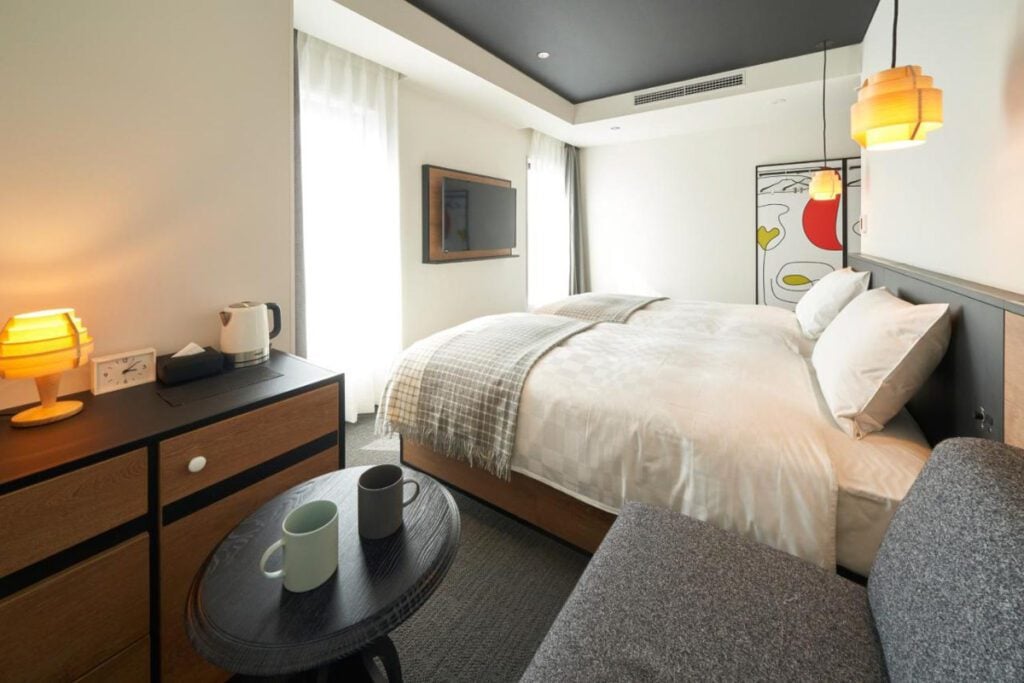
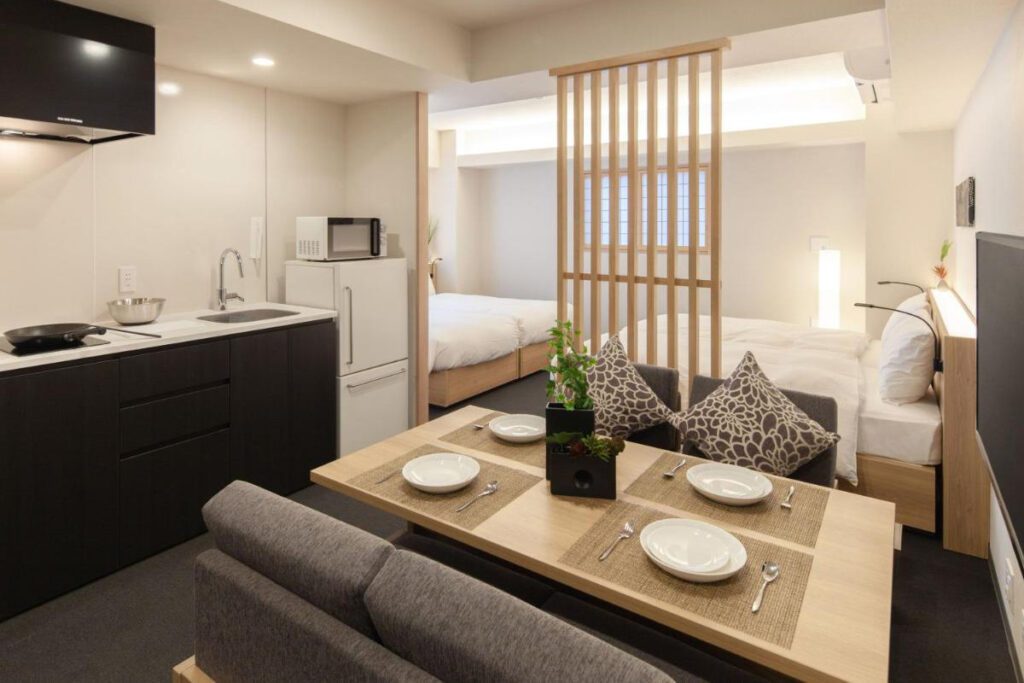
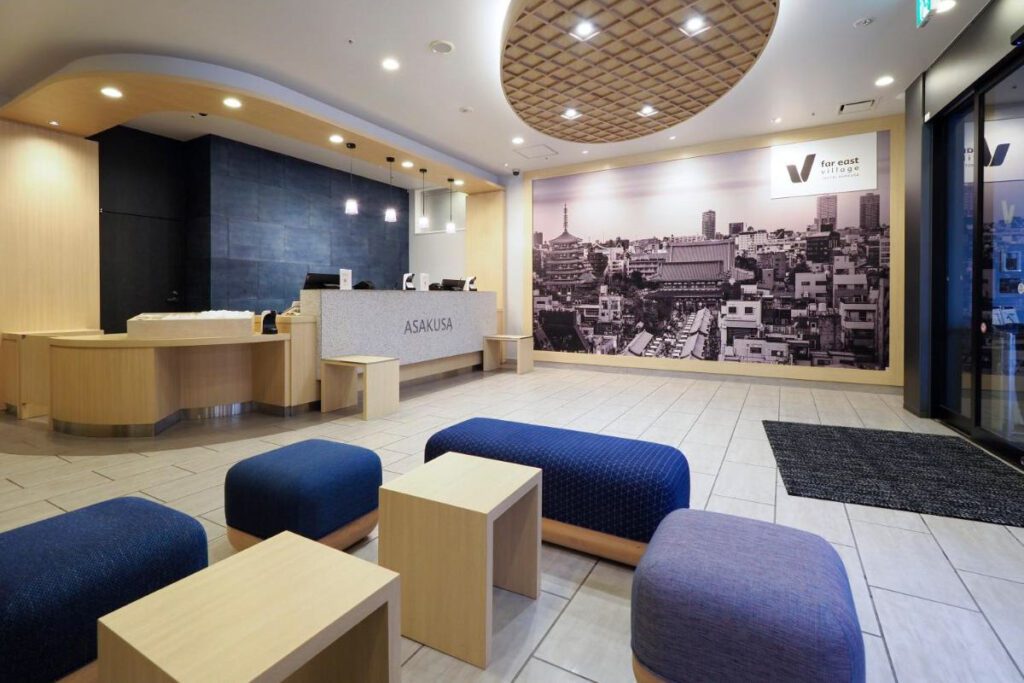
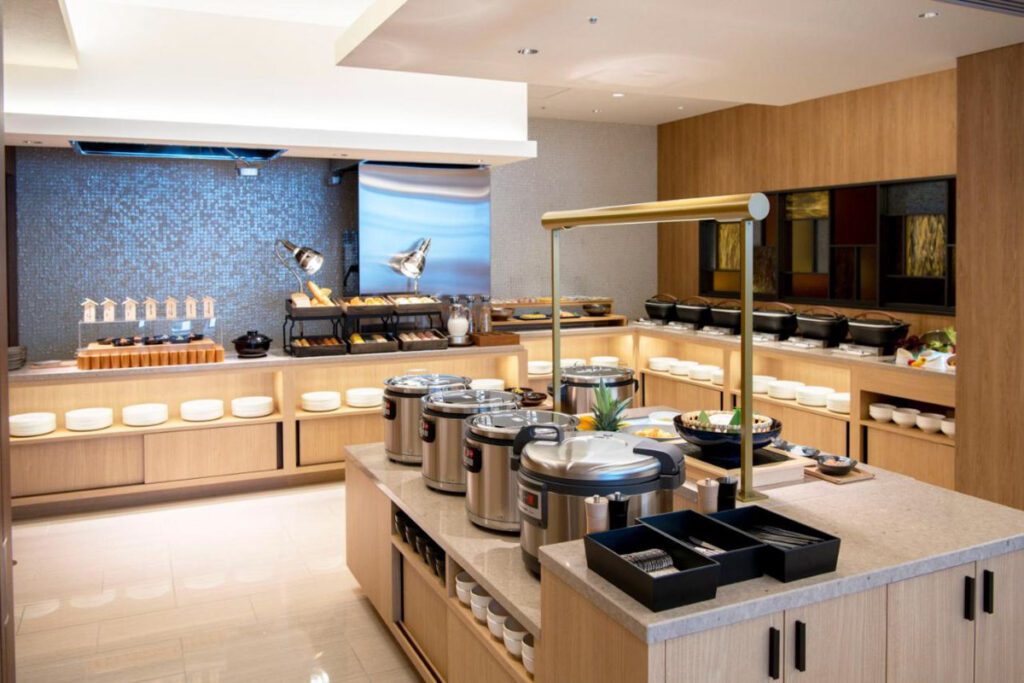
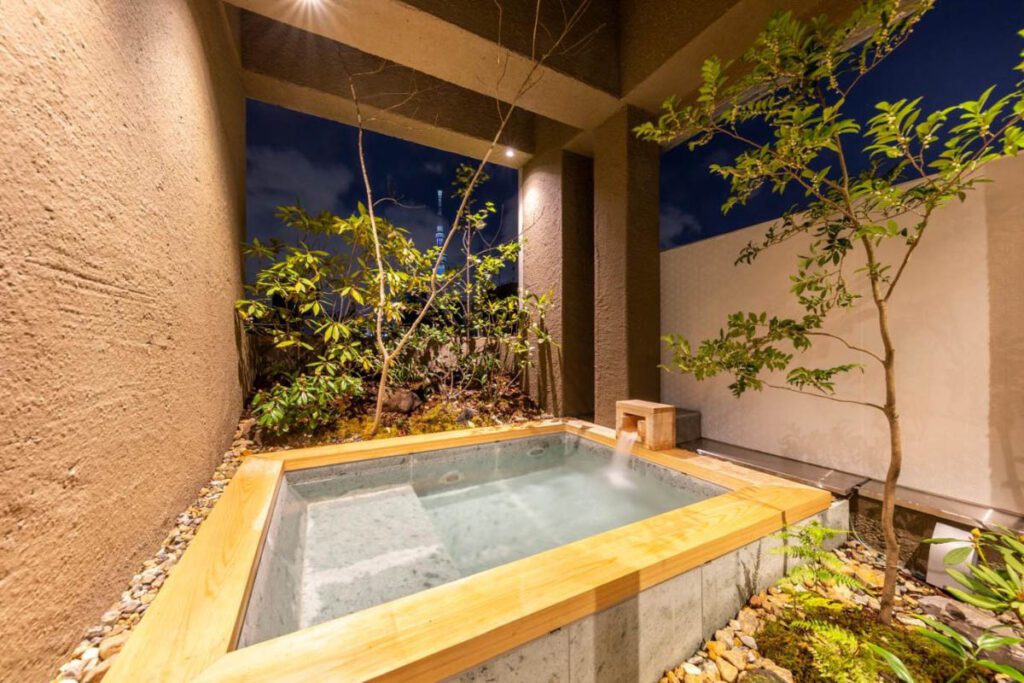
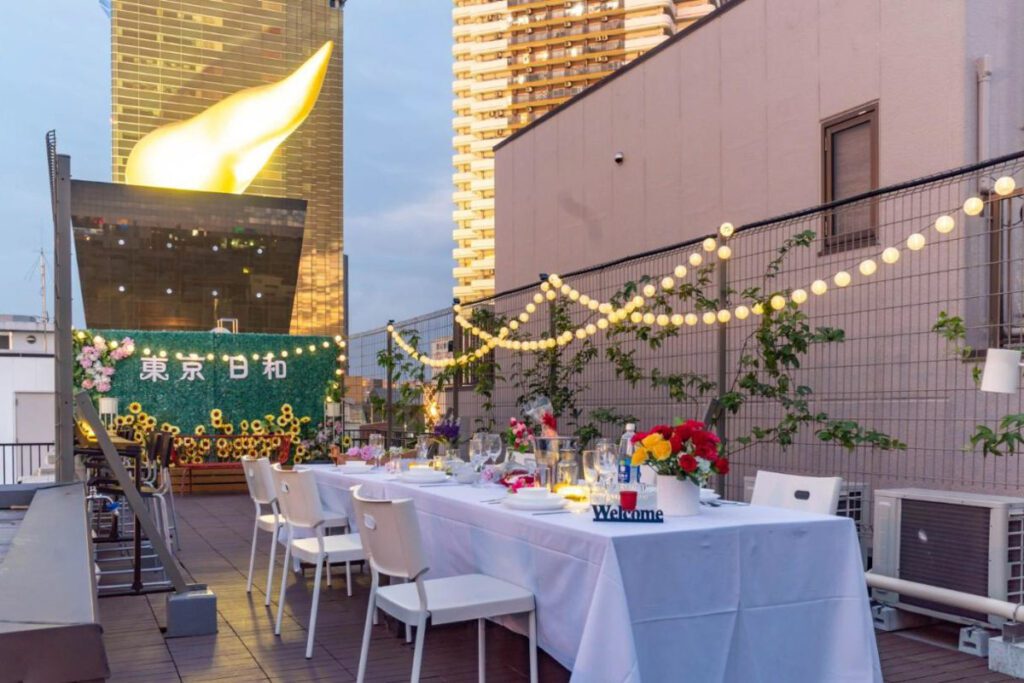
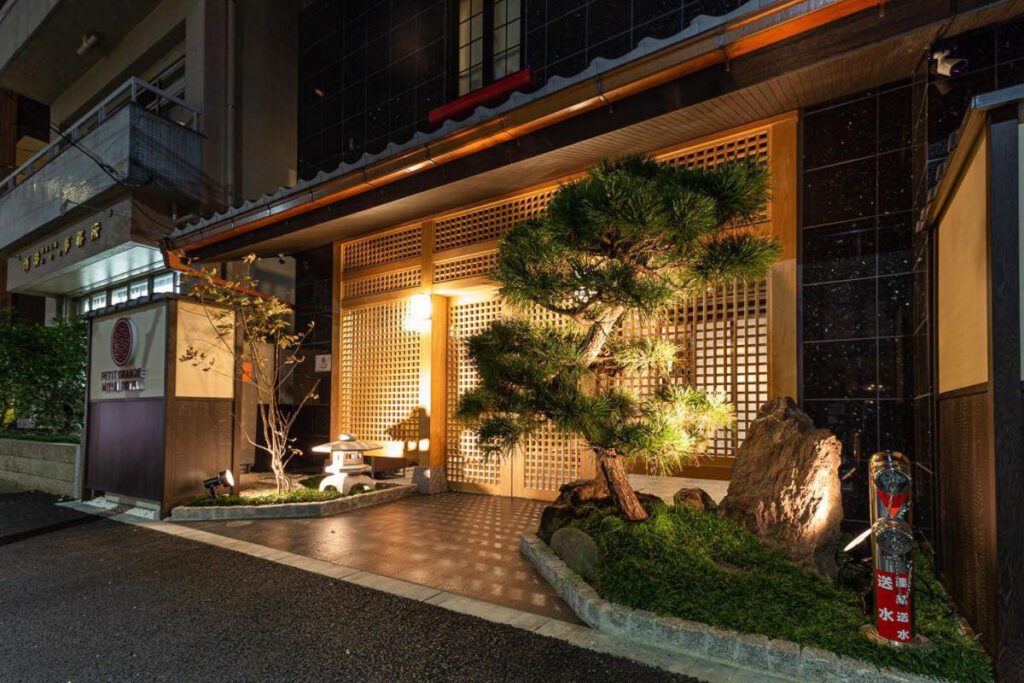
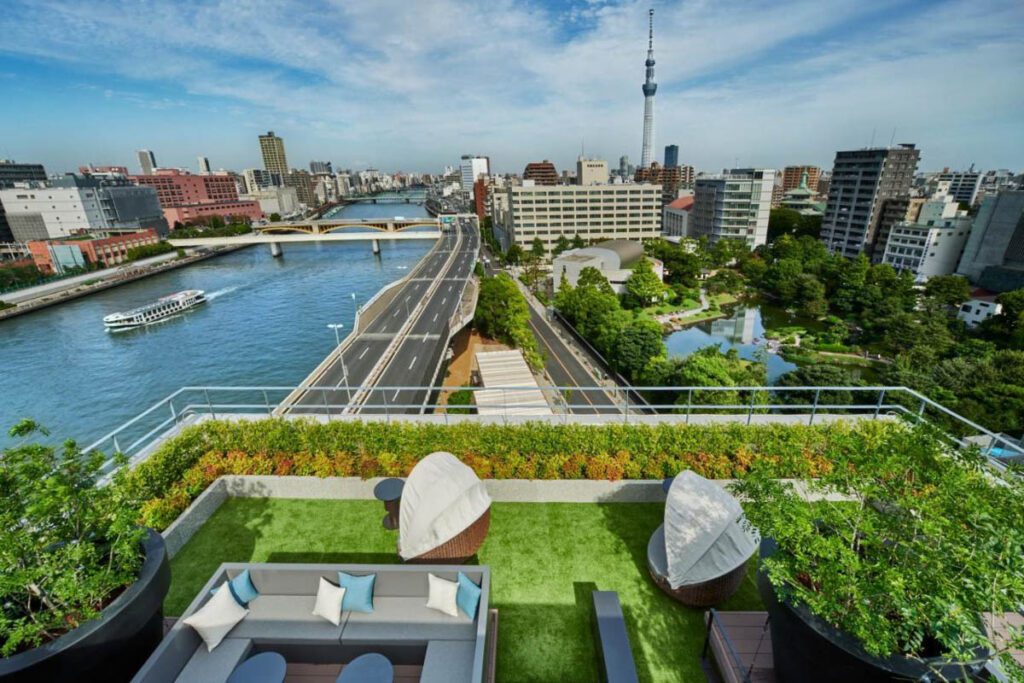

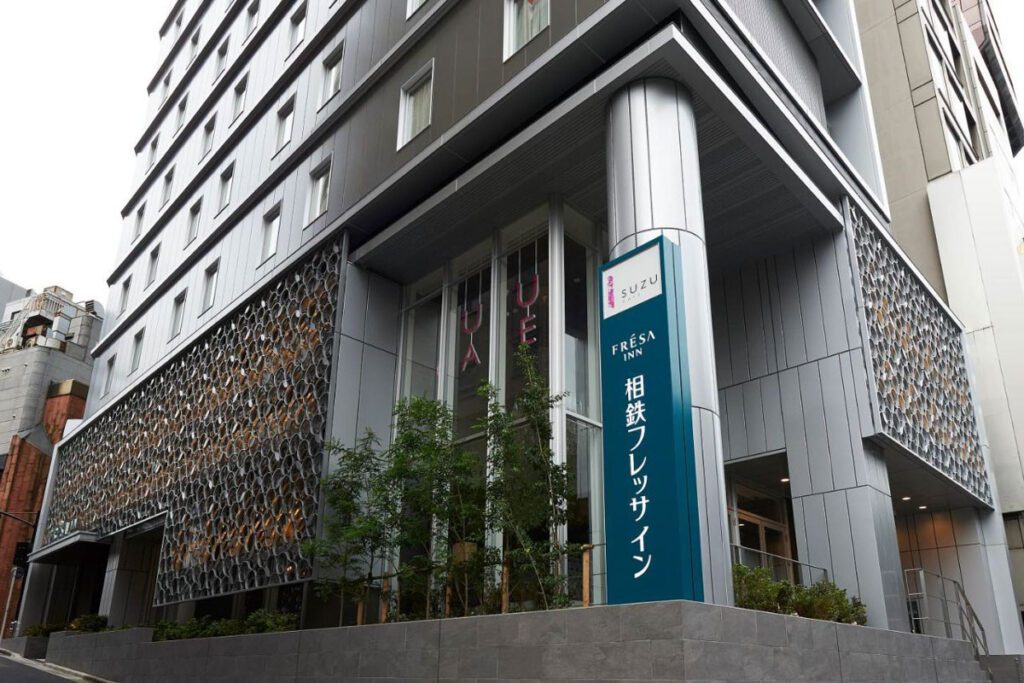
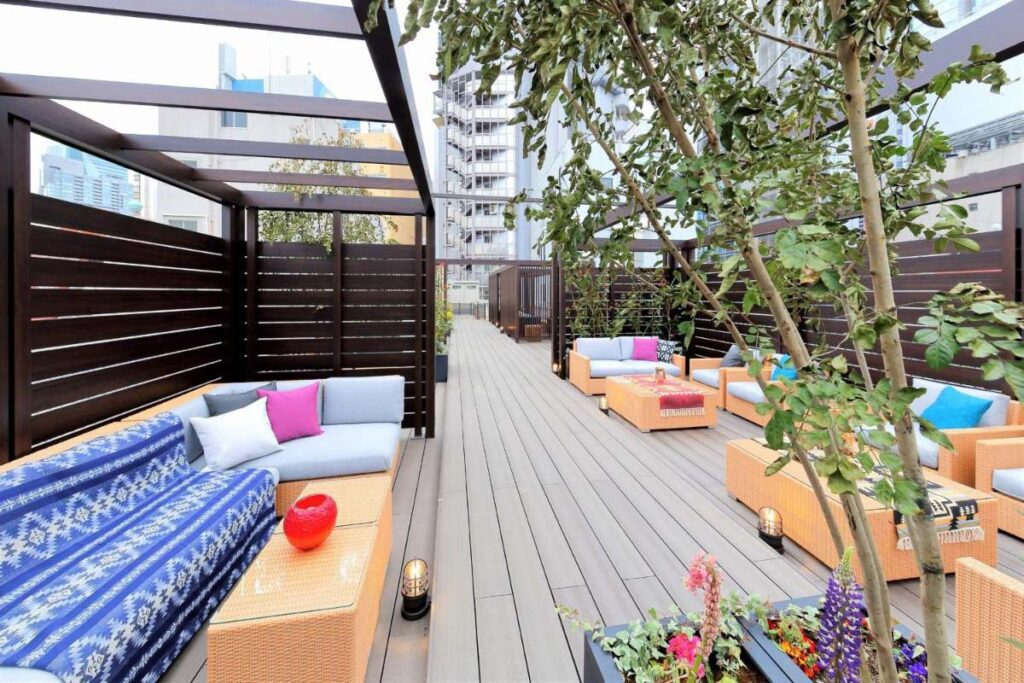
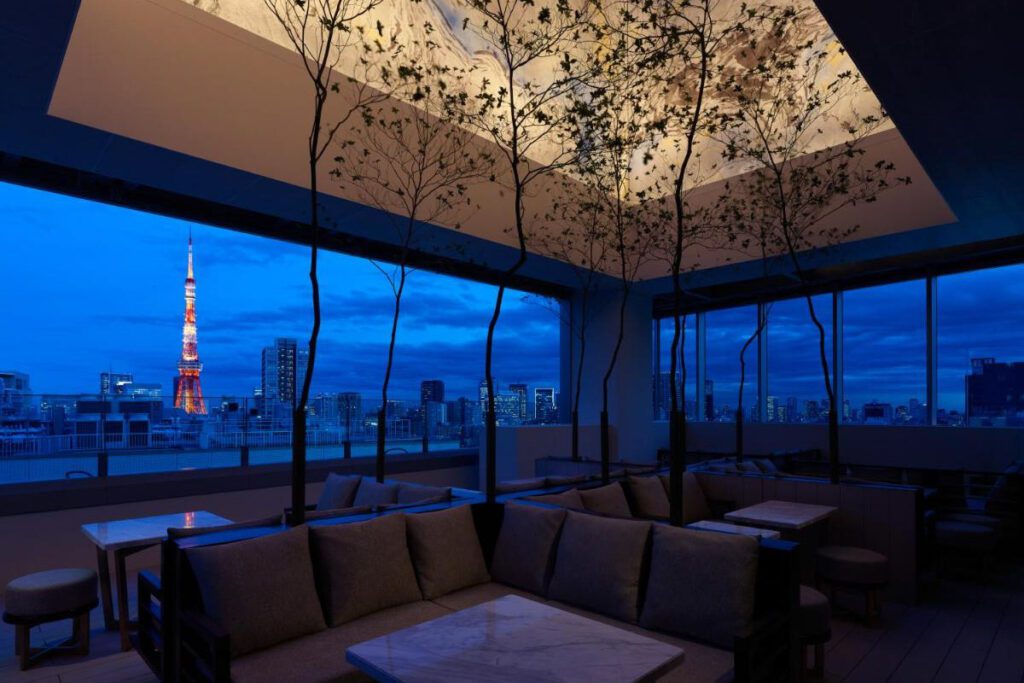
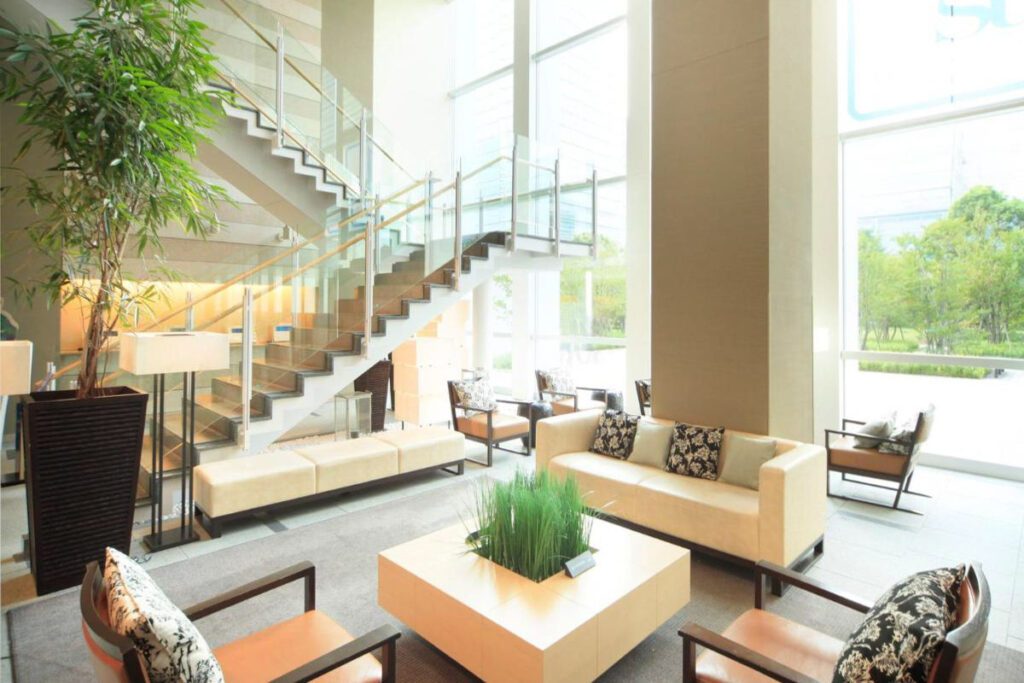
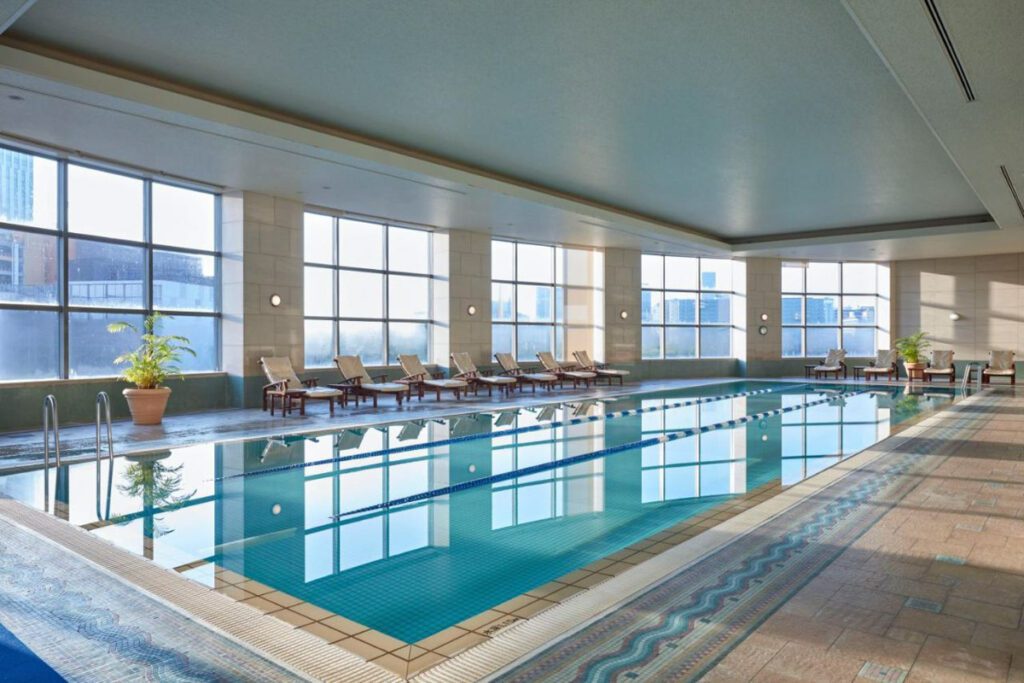
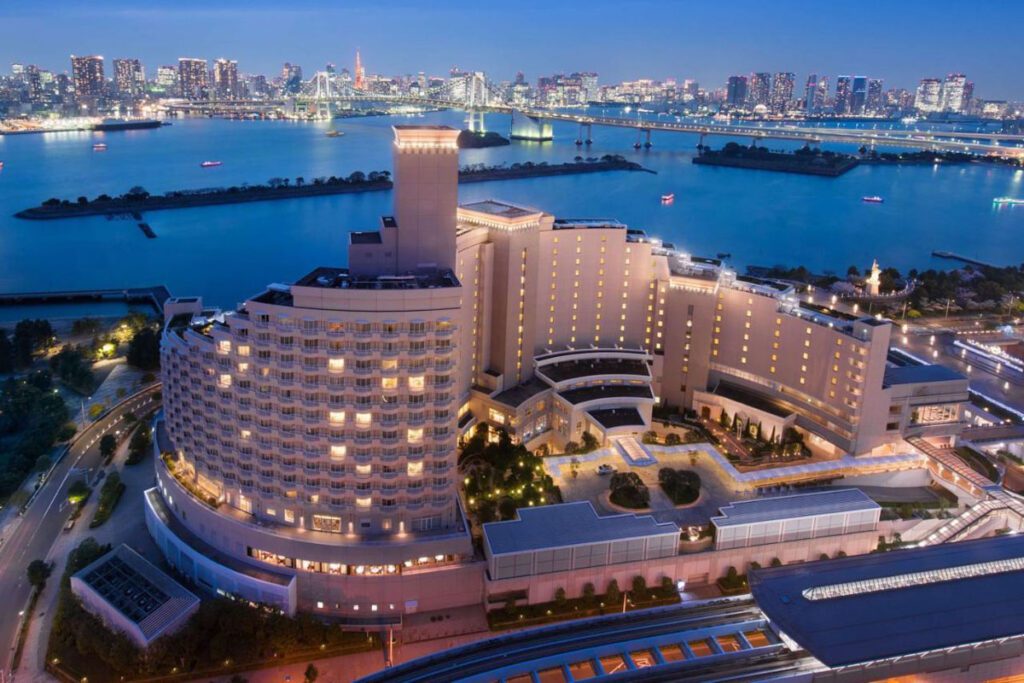
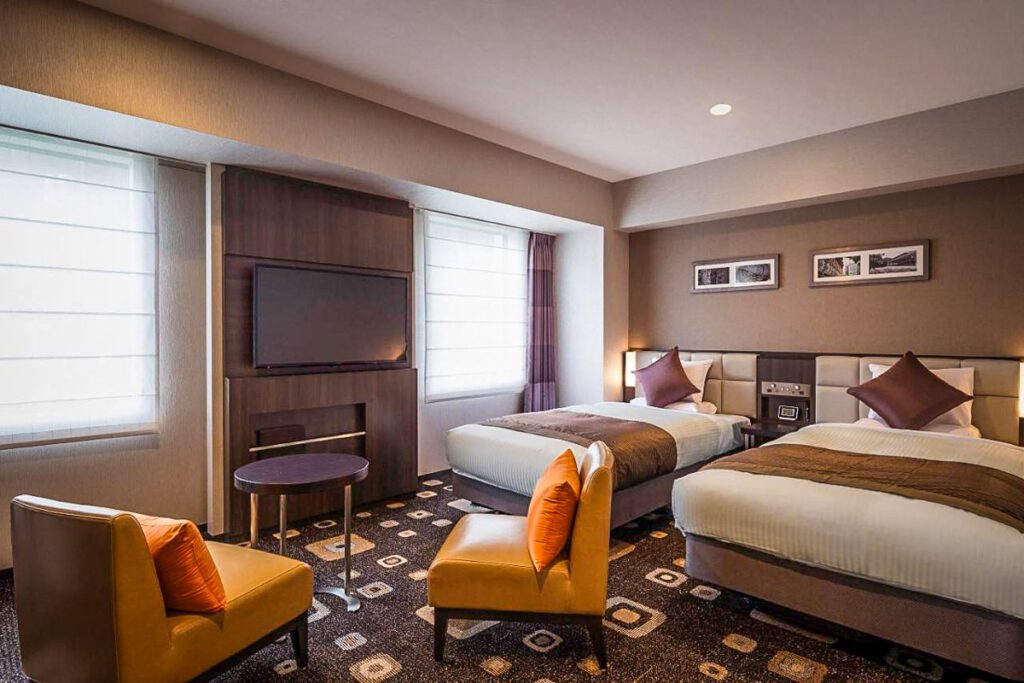
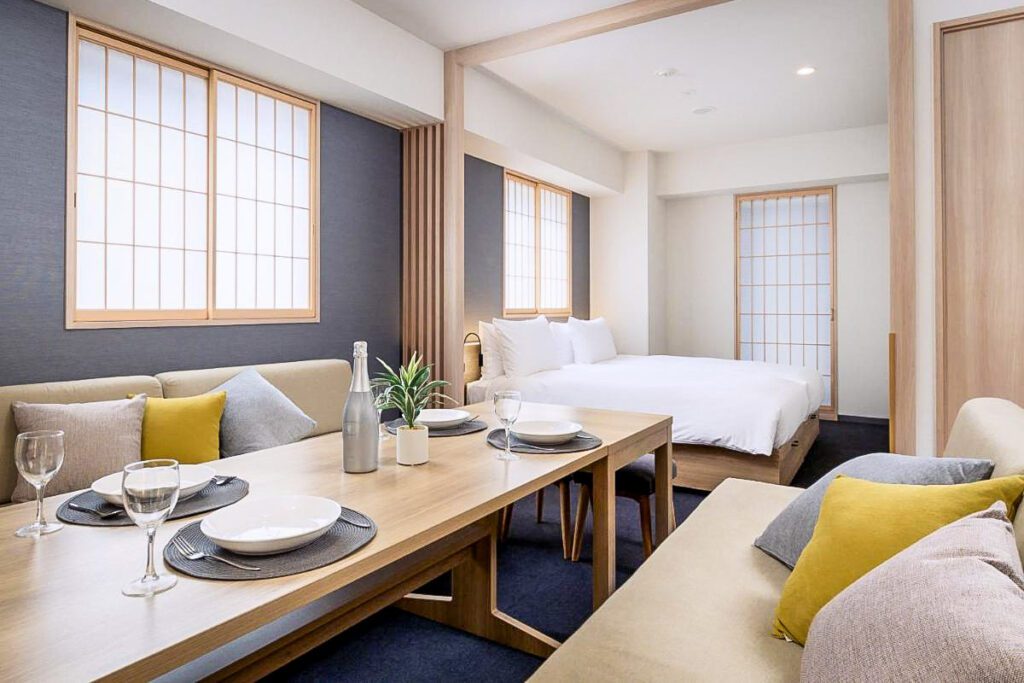
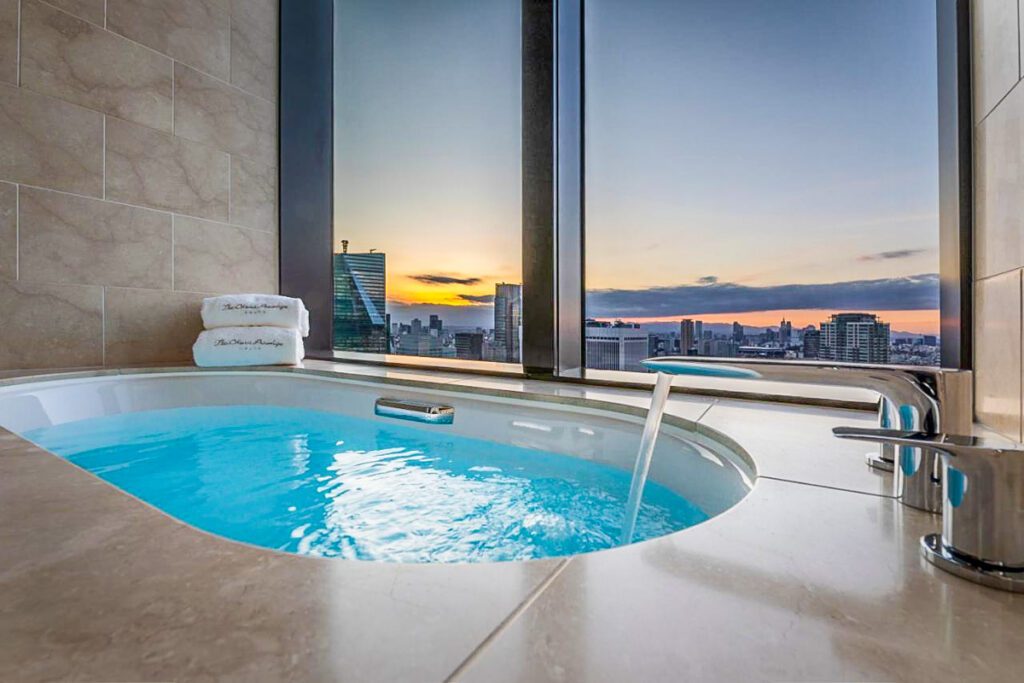
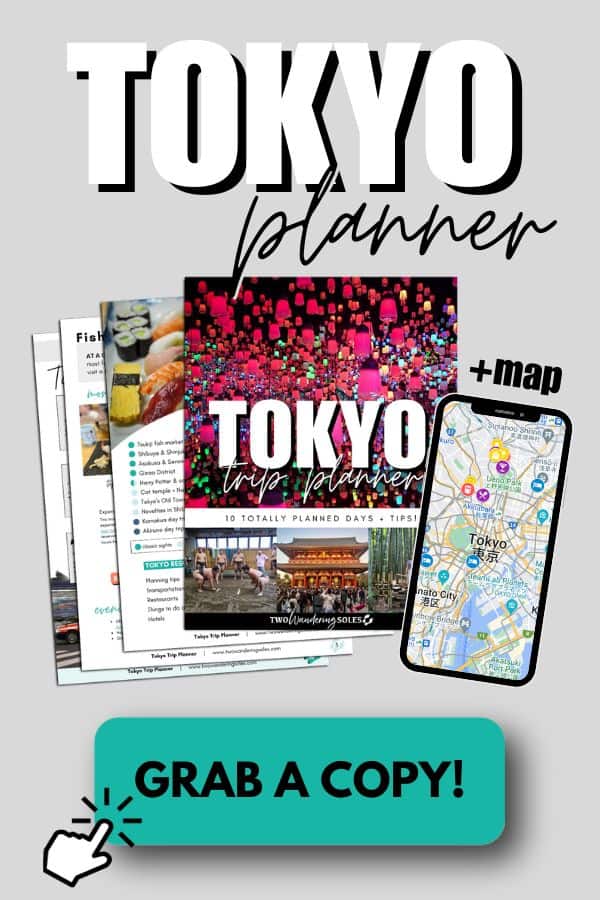
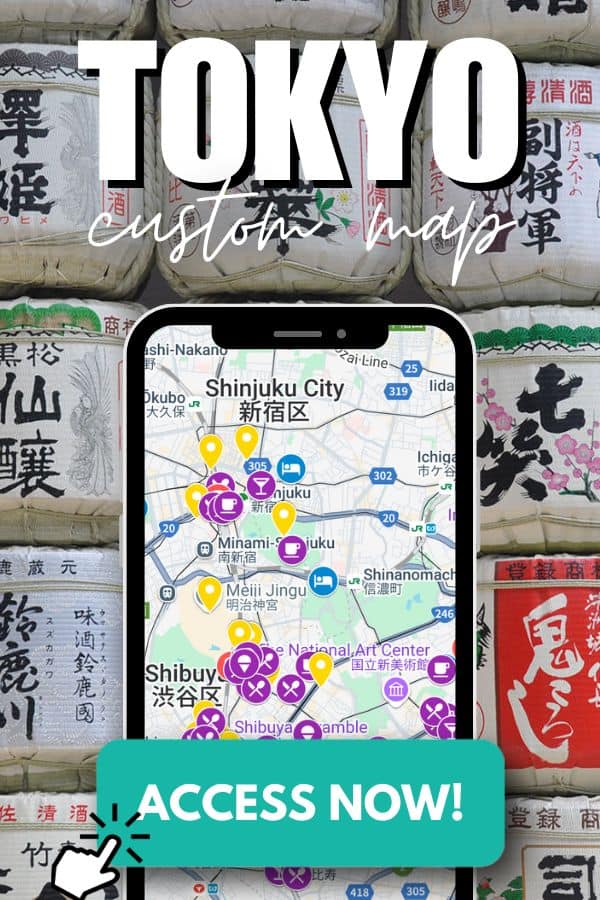
This is a great website, albiet a bit confusing. I booked a sumo tour through Magical trip. It was a great experience booking with them. I had wanted to book a private day Tokyo tour; however the starting time was only offered at 9AM, and I needed a private tour that would commence at noon, due to time of arrival n Tokyo. Perhaps there’s another site that can accommodate this?
Hi there, you can always check out Get Your Guide for tours of Tokyo. We have booked on their platform in the past and it was a very smooth experience. Here is the link to it: https://www.getyourguide.com/tokyo-l193/?partner_id=HQ0DHNI&utm_medium=online_publisher